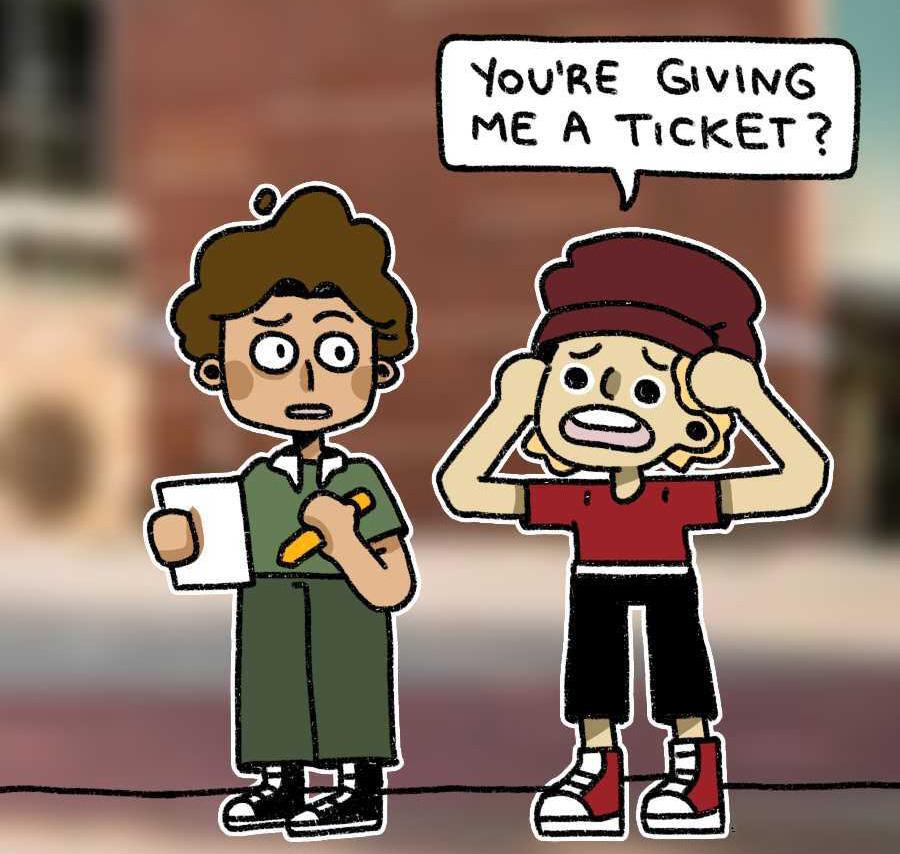STORY AND PHOTOS BY RUBY SECREST SEE PAGES 12-14



STORY AND PHOTOS BY RUBY SECREST SEE PAGES 12-14


NEWS: Rising tariffs, rising tension: What CSU students should know PAGES 4-5
LIFE: Rams Against Hunger supports international students through food insecurity PAGE 6
SPORTS: Spring season ends as CSU volleyball steps into new era PAGE 8
SCIENCE: CSU occupational therapy department ranks top 3 nationally PAGE 11
ARTS: Saxsquatch sighted performing beastly funk experience PAGE 15
OPINION: SkinnyTok is dangerous, harmful PAGE 16
MEDIA: FoCoMX unites artists, community members PAGES 12-13
Astrology Mixology at FoCo Cafe 6-9 p.m. April 25
Cheesemaking: Mozzarella and Ricotta at Ginger and Baker 11 a.m. to 1 p.m. April 26
“Coming Home — A Side-By-Side with NoCoYo (Folk Tales and New Worlds)” at Griffin Concert Hall 3 p.m. April 27
Letters to the Editor reflect the view of a member of the campus community and are submitted to the publication for approval. Readers may submit letters to letters@collegian.com. Please follow the guidelines listed at collegian.com before submitting.

Tay, a hip-hop dancer from Denver, dances during the freestyle one-on-one dance battle during Colorado State University’s Hip-Hop Dance Club event April 5. Tay is a part of dance communities Boogieta Crew and Concrete Collective and came from Denver to perform in this year’s Vision event, which invited 16 dance duos from all over Colorado to perform in the Lory Student Center Theater. PHOTO BY
This publication is not an official publication of Colorado State University, but is published by an independent corporation using the name ‘The Rocky Mountain Collegian’ pursuant to a license granted by CSU. Approximately 59% of Rocky Mountain Student Media Corp’s income is provided by the Associated Students of Colorado State University (ASCSU) for the purpose of fostering student careers post-college and greater campus awareness and engagement. The Rocky Mountain Collegian is a 3,000-circulation student-run newspaper intended as a public forum and is printed on paper made of 30% postconsumer waste. It publishes every Thursday during the regular fall and spring semesters. TheCollegian publishes online Monday through Thursday. Corrections may be submitted to the editor in chief and will be printed as necessary on page two. The Collegian is a complimentary publication for the Fort Collins community. The first copy is free. Additional copies are 25 cents each.
CORRECTIONS
Everybody makes mistakes, including us. If you encounter something in the paper you believe to be an error, please contact us at: copy@collegian.com. Lory
Allie Seibel | Editor in Chief editor@collegian.com
Hannah Parcells | Managing Editor managingeditor@collegian.com
Claire Vogl | Executive Editor copy@collegian.com
Willow Engle | Copy Chief copy@collegian.com
Nathan Carmody | Print Director design@collegian.com
Trin Bonner | Illustration Editor design@collegian.com
Aubree Miller | News Editor news@collegian.com
Sam Hutton | News Editor news@collegian.com
Christian Arndt | L&C Editor life@collegian.com
Katie Fisher | Science Editor science@collegian.com
Ruby Secrest | A&E Editor entertainment@collegian.com
Michael Hovey | Sports Editor sports@collegian.com
Sophie Webb | Sports Editor sports@collegian.com
Dominique Lopez | Opinion Editor letters@collegian.com
Garrett Mogel | Photo Director photo@collegian.com
Cait Mckinzie | Photo Director photo@collegian.com
Gigi Young | Digital & Social Director social@collegian.com
Isabella Trinchero | Social Media Coordinator social@collegian.com
“Everyone understands that the university is in an incredibly difficult position. But we are all in a very difficult position, and a lot of us are dealing with funding disappearing, financial difficulty, inability to travel (and) can’t go to see family. We are dealing with this on top of, then, a system that isn’t appearing to make the best efforts — from our perspective — to make us feel welcomed or supported.”
ANONYMOUS CSU RESEARCHER
By Aubree Miller @aubreem07
Following confirmation that at least 16 international students at Colorado State University have had their visas revoked, some have expressed concern about a lack of response and support from the university. CSU has around 2,500 international students and scholars, according to the catalog website.
The revocations allegedly began in late March and were discussed during April’s Faculty Council meeting. Some staff and faculty expressed concerns at the meeting, and at the time, it was confirmed that six students had their visas revoked by the U.S. Department of Homeland Security. The number has since risen to 16, as confirmed by University Marketing and Communications.
Visa revocations have been reported around the country since late March, both at public and private universities. The 18 schools that comprise the Big 10 athletic conference recently announced their mutual compact to stand up to the Trump administration, and other colleges in the state of Colorado have also seen student visas revoked. The University of Colorado has had 22 reported across all four of its campuses.
CSU administration has published statements on the Office of International Programs’ website, including one from Vice Provost for International Affairs Kathleen Fairfax released April 4.
“We want to clarify some questions we’ve received about the visa revocations impacting some CSU international students,” the statement reads. “CSU has not been contacted by, nor has the institution been asked to provide student information to, the U.S. Department of State or Department of Homeland Security.
To date, no specific justification for the visa revocations has been provided to the impacted individuals or CSU.
We are working proactively with the students to help them connect with appropriate legal resources and understand their options. CSU is providing this support based on students’ personal decisions.”
The vice provost was unable to respond to requests for comment or provide further information. CSU’s Student Legal Services office was also unable to offer information.
The administration said students and faculty are encouraged to reach out to International Programs with questions and concerns.
For some members of the community the current uncertainty is very personal, as one CSU researcher working for the university on an international visa pointed out.
The researcher, who requested that they not be identified in order to protect their safety, explained that the lack of communication from CSU leadership has left many international members of the campus community in the dark.
“We really only find out about these things after they’ve happened and often through third sources, not from the university,” they said.
The researcher mentioned a line in a recent email about the visa revocations but noted that administration said nothing further. The correspondence, initiated by a CSU SOURCE email, sent out latest headlines from March 31, 2025, and included a section labeled “Get updates on federal actions,” which states: “Information for international students who have had their visas revoked by the U.S. Department of State has been posted on the federal updates page.”
The researcher felt unsupported by this and expressed frustration with the apparent lack of support.
“It actually makes you feel less supported rather than more supported,” they said. “It feels institutional and cold and pulls you to that end of the spectrum … rather than feeling appreciated.”
The university’s response to this issue — or lack thereof, as expressed by some students and faculty — comes amid announcements from
universities across the country making public statements against the Trump administration. The researcher said they felt that remaining cognizant of the university’s difficult position while also remaining committed to international students, staff and faculty do not have to be opposing positions.
“Everyone understands that the university is in an incredibly difficult position,” they said. “But we are all in a very difficult position, and a lot of us are dealing with funding disappearing, financial difficulty, inability to travel (and) can’t go to see family. We are dealing with this on top of, then, a system that isn’t appearing to make the best efforts — from our perspective — to make us feel welcomed or supported.”
They also expressed frustration that students and faculty are being asked to go to the administration and argued that vulnerable people are “being asked to effectively stick their heads up” in order to receive support from the university.
“There is a sense that this whole situation is being framed as some sort of a binary, where the university has to be political and quiet, and that means they can’t outwardly support us,” they said. “But I think that’s a false dichotomy, a false binary. They could be doing both.”
The university has not provided any information about the students impacted for safety and privacy
reasons. The latest update to the International Programs’ website April 9 contained travel guidance for international students and scholars.
Anders Fremstad, an associate professor in the economics department, shared concerns over students who have been impacted. He was informed that two students of his had their visas revoked, left the country and would be finishing the semester online but was not given information beyond that.
“It was shocking to get the email that one of our students had their visas revoked and that there was nothing we could do about it,” Fremstad said.
He also expressed support for taking legal action against the revocations.
“These visa revocations and self-deportations should be challenged in a court of law,” Fremstad said. “If universities simply facilitate these executive orders, it is unclear where they are going to stop.”
This is an ongoing issue, and updates will be made as they become available. Impacted students, staff and faculty can reach the Office of International Programs with questions and concerns.
Reach Aubree Miller at news @collegian.com.
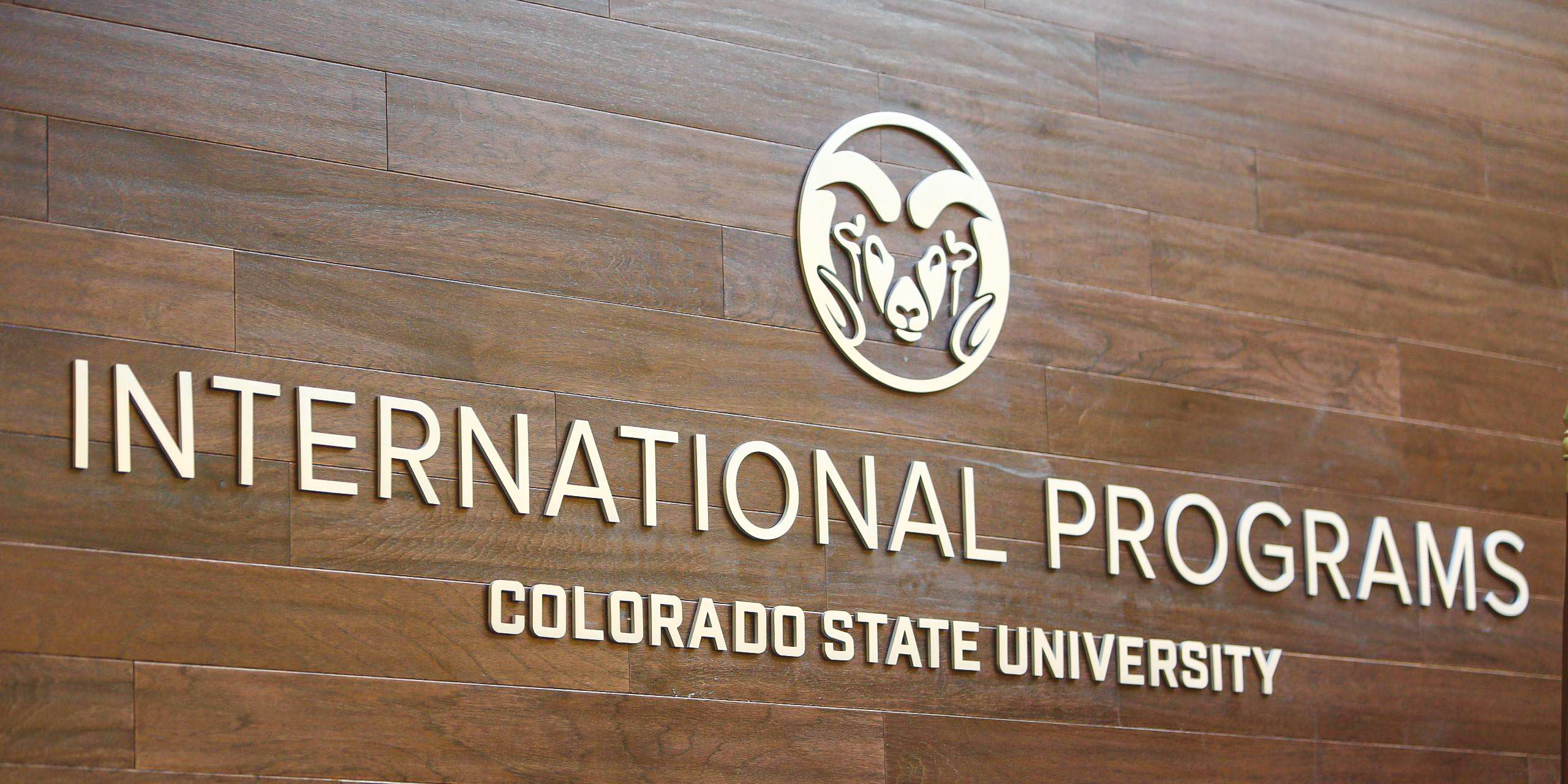

By Chloe Waskey @csucollegian
On April 2, President Donald Trump declared the date “Liberation Day” and imposed a series of tariffs on U.S. trade partners. The tariffs, presented as a symbol of American economic independence, were calculated based on the trade deficit between the United States and each partner nation.
Following a sudden and dramatic decline in the stock market, Trump placed a 90-day pause on his policy almost immediately, with the exception of China. As of April 14, there is a blanket 10% tariff on every country, 125% tariff rate on China and some product specific exceptions, including a 25% tariff on automobiles, steel and aluminum and no reciprocal tariffs on electronics.
These tariffs are all subject to change.
As confusion spreads across markets and American households, many Colorado State University students are worried about how Trump’s tariff policy will impact their livelihoods and worsen the issues they already face.
“The job market is god-awful — it’s impossible to live anywhere,” political science student Izzy Knaus said. “How are we going to pay for life when it’s hard to get jobs? The economy is crashing. No one can afford housing.”
To understand the full impact, it is important to break down how tariffs work, what the administration aims to achieve and how these changes could reshape everything, from the cost of living to job prospects for graduating seniors.
A tariff is a tax paid to the U.S. government by a domestic company that is importing goods from another country. Matthew Hitt, a political science professor at CSU, described how tariffs would work on his hypothetical business: Matt’s Hats.
“If I’m running a store here in Fort Collins and I want to import hats that were made in Canada, I will pay the tariff to the U.S. government upon the importation of my Canadian hats,” Hitt said. “If I’m paying a 10% tariff, I’ve just lost 10% of my profit. So what I have to do then is raise the price of the good to cover the tariff or go out of business.”
This means that businesses will often raise prices to absorb the costs of these tariffs, which ultimately affects consumers.
Although tariffs are known to raise the price of goods for consumers, they have historically been an effective tool for economic development. Ramaa Vasudevan, an economics professor at CSU, detailed how tariffs have successfully been leveraged in the past in an email interview.
“Tariff barriers have been an integral part of the developmental strategy of developing countries in the decades after the Second World War,” Vasudevan said. “Tariffs can be an effective tool for nurturing industry when they are targeted and backed by other policy measures to promote industrial investment in specific sectors.”
Hitt added that some politicians and economists see tariffs as a way to boost specific industries, but for them to be effective, they often need to be in place long enough to justify changes in manufacturing.
“If there’s a particular industry that is being genuinely treated quite unfairly, then you tariff that one particular good that’s coming from the country that you think is being unfair to try and remedy just that,” Hitt said. “The tariff has to be in place for a long time with its negative economic impacts (in) the broader economy for that company to think, ‘Yeah, it’s worth it to bring this factory back home.’”
However, Vasudevan also pointed to the historically unsuccessful 1930 Smoot-Hawley Tariff Act — the most sweeping tariff policy in U.S. history — which triggered a wave of retaliatory tariffs and exacerbated the Great Depression. While tariffs have existed for decades, she emphasized that there is no clear precedent for such broad policy in today’s global economy.
“This is the more pertinent historical comparison for the sweeping tariffs being pushed by the present administration,” Vasudevan said. “A key difference is that the world is much more interconnected, and trade is a more integral part of the goods consumed across the world, which are produced through supply chains that crisscross borders. Blanket tariffs are not the right tool for bringing back manufacturing to the U.S. in the present context.”
Unlike the targeted, long-term tariffs used in the past, the Trump administration’s policy represents a much broader and more abrupt intervention in global trade that has yet to be studied.
Trump has framed the tariffs as a way to take back economic sovereignty and reverse what he said he believes to be years of Americans being ripped off by its trade partners.
According to a White House press statement, “President Trump refuses to let the United States be taken advantage of and believes that tariffs are necessary to ensure fair trade, protect American workers and reduce the trade deficit — this is an emergency.”
Experts said the U.S. has had trade deficit with many of its partners for years, but this is not necessarily an emergent sign that America is being taken advantage of.
“America is very prosperous, and so our consumers, our businesses, are able to import a lot of goods from all around the world,” Hitt said. “There are some countries that ... simply don’t remotely have the kind of wealth per capita that America has, so how could we possibly expect them to have a trade surplus where they buy more American goods than we buy from them?”
Nonetheless, Trump said the tariffs will increase American manufacturing and present avenues for future negotiations with trade partners. According to Hitt, these motivations are contradictory at best.
“One of the goals is a short-term strategy to encourage more trade again once we think that the trade deal is better, or this is a long-term strategy to incentivize manufacturers to return home,” Hitt said. “They can’t be both at the same time. They can see their short-term strategy or long-term strategy, and it’s unclear which we’re actually pursuing.”
While tariffs have been used in the past as a controversial way to negotiate new trade deals, it is unclear how tariffs would feasibly encourage American manufacturing when they are subject to change via negotiation. The scenario can again be exemplified through the hypothetical business Matt’s Hats.
“If I’m a rational producer of any goods and services and I’m doing it overseas right now, I’ll say, ‘Well, I’m not going to invest millions, billions, of dollars in production in the United States because next month, maybe those tariffs will be gone, and this will be a huge waste of money,’” Hitt said.
“The most important impact will be on grocery prices. The sticker shock is already being felt here. Cars, even secondhand ones, and bikes will become more expensive.”
RAMAA VASUDEVAN CSU ECONOMICS PROFESSOR
According to Vasudevan, companies are likely to explore other avenues before investing in American manufacturing.
“Offshoring was the result of the decisions of U.S. corporations to relocate globally in order to protect and enhance their profit margins,” Vasudevan said. “A much more concerted, coordinated strategy beyond blanket tariffs is needed to entice them back. It is more likely that businesses will try to carve out exemptions and loopholes for the tariffs through deals with the administration.”
For now, Trump’s long-term intentions remain unclear, but the effects of his policy are already rippling through everyday life for many students at CSU. With rising costs, an unstable job market and the looming possibility of a recession, students are bracing for even more economic uncertainty in the months ahead.
Vasudevan said students can expect to pay more for most goods, even secondhand.
“The most important impact will be on grocery prices,” Vasudevan said. “The sticker shock is already being felt here. Cars, even secondhand ones, and bikes will become more expensive.”
Knaus said she is worried because students already struggle to afford necessities like housing and food.
“We already have high rates of food insecurity here at CSU, and I think that’s going to go up with higher cost of living, higher just like having to pay more for everything — for gas, for cars, for tech, for food, like, all of that,” Knaus said.
Cole Mcginnes, a CSU business student, said he already has to budget at the grocery store due to high food prices.
“I’m not rolling (in) money,” Mcginnes said. “When I go to the grocery store, I’m comparing prices to save a dollar or two.”
For students who plan to graduate soon, the possibility of a volatile job market is another pressing anxiety. Mcginnes said he recently accepted a sales position, but he is worried the offer might not stay on the table.
“They could rescind that job offer because the economy is not right, and they can’t afford to pay me a base salary, and people aren’t buying from them as much,” Mcginnes said. “It just trickles down to kind of where I’m at, and then I’ll be out of the job basically.”
Vasudevan said layoffs and a tighter job market are very real possibilities for multiple industries, ranging from retail to agriculture.
“While manufacturing jobs may or may not come back, some service sector jobs might also be wiped out,” Vasudevan said. “This is important because services have been the mainstay of employment growth in the recent decades.”
According to Hitt, this could mean many students forego the job market altogether and instead stay in school.
“If the economy tips into recession, that could make the market more competitive,” Hitt said. “There could be fewer places hiring or more people out of work or laid off who are competing for those same jobs. So often, we see in economic recession college students start to think more seriously about postsecondary options.”
Meanwhile, one of the most immediate effects of Trump’s trade policy has played out in the stock market, where investor uncertainty has triggered sharp declines. In the days following the tariff announcements, major indexes dropped and volatility spiked, impacting some student investors and their families at CSU.
“My parents have a lot of money in stock market, and they’ve lost like $500,000,” CSU student Jack Conroy said. “I also lost like $2,000 in mutual funds.”
Like many investors, Conroy said he plans to wait out the market decline and invest in more secure stocks later on.
“I just figured I’ll let it get back maybe to early March levels and start taking it out of some mutual funds, and then maybe use about a quarter of it, put in some other stocks, or maybe something that’s even less volatile, you know, like treasury bond,” Conroy said. “But basically, just waiting for now.”
However, Vasudevan said even traditionally stable investments like U.S. Treasury bonds may no longer be safe.
“A worrying sign, and one that triggered the 90-day pause on the additional punitive tariffs, is the
volatility in the market for U.S. treasuries,” Vasudevan said. “These have traditionally been a global safe-haven for global investors — their asset of choice when investors become jittery. This role is coming into question in the present moment. Instead of buying U.S. treasuries, investors are selling these in a dash for cash. It will take another heroic intervention by the U.S. (Federal Reserve), like that during the pandemic, to extricate the financial system from the mess.”
With prices climbing and global markets rattled, many economists warn that a recession could be on the horizon, a possibility that has some CSU students on edge.
“(Recession) takes decades to bounce back from, so that’s obviously the concern is, like, we’re going to have this huge recession,” Knaus said. “I mean, during recessions, people die. That impacts quality of life conditions for everybody.”
A recession, while not guaranteed, is not out of the realm of possibility. As the market becomes increasingly volatile, some economists worry that the conditions for recession are emerging.
“The policies are going to exacerbate inflation as prices of mass consumer goods and consumer durables rises,” Vasudevan said. “This would imply a squeeze on real wages. … In the absence of coordinated policies to support domestic manufacturing growth and reshore production, we are going to see growing joblessness. So the tariffs and the uncertainty around these policies is going to trigger both recession and inflation.”
A hallmark of Trump’s tariff policy has been uncertainty, but this also applies to the question of severe economic downturn. While Vasudevan’s warning about the looming economic strain is stark, she also emphasized the importance of staying informed and engaged, especially during such uncertain times.
“All this might appear overwhelming,” Vasudevan said. “Things are in a state of flux. Hope in times like these lies in being informed; that is what being a college student is about — building community, promoting and participating in rational, evidence-based policy debates and being an engaged citizen.”
Reach Chloe Waskey at news @collegian.com.
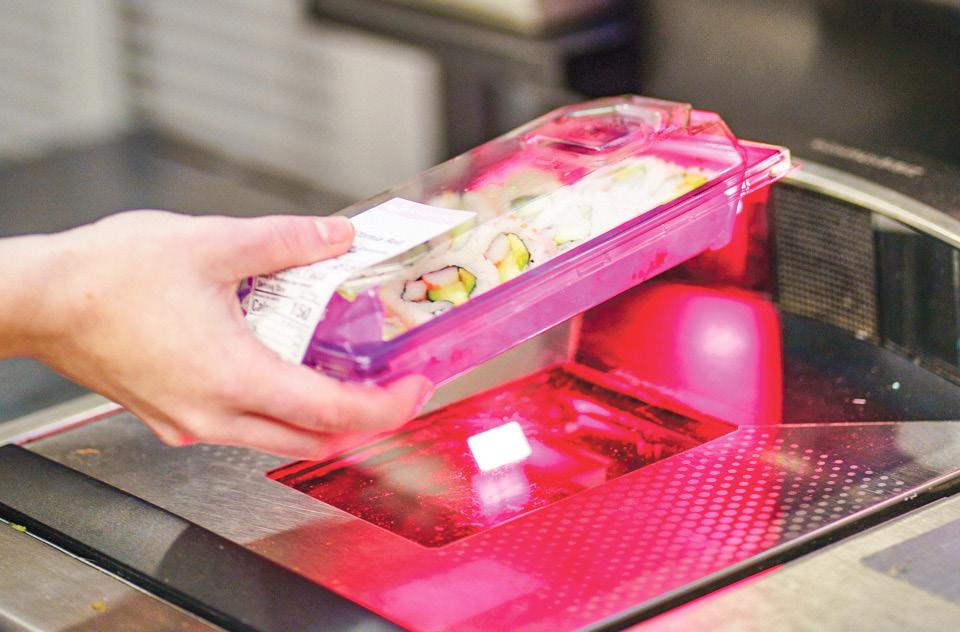

By Aubree Miller @aubreem07
With biweekly meetings, the Restorative Justice Club at Colorado State University promotes principles of conflict resolution to create community and build connections among students.
The club originated from the course ETST 265: Culture of Care in Schools, taught by Adjunct Professor Tom Cavanagh. After spending time in New Zealand, Cavanagh returned to the U.S. with a goal of fostering a culture of care in educational settings.
The club consists of student-led conversations about the principles of restorative justice, with each meeting centering on a communitybuilding circle — a guiding pillar of restorative justice.
New attendee Hillary Condit, who works at CSU’s Student Resolution Center, emphasized the importance of community-based learning and that it sets students up for success when there are conflicts in educational settings.
“I really love how the culture of care approach is proactive,” Condit said. “It’s like, ‘Let’s build a community first; let’s build a foundation first, and then we’ll
have something to work with and come back to when there’s friction or conflict.’”
Cavanagh also attended and discussed his experience teaching Culture of Care in Schools and his appreciation for the course.
“Teaching the course is just the highlight,” Cavanagh said. “I really, really enjoy it. … It’s a real privilege to get to teach what you love.”
Mia VonLunen, an early childhood education student and founder of the Restorative Justice Club, focused on how she uses restorative practices in everyday life.
“You find yourself using restorative justice practices just passively,” VonLunen said. “I feel like a big part of that is just listening to understand. That’s one thing that just, like, sticks with me and retaining your humility that you don’t know everything, and the way that you learn is by listening to other people.”
Another important topic the club covers is how restorative justice practices are rooted in Indigenous interpretations of community and culture — and how Western society contradicts that framework. Cavanagh discussed how the idea of individualism presents itself on CSU’s campus, potentially making students feel unwelcome.
“If we truly want to be a diverse campus and make our people from other cultures (and) other languages feel at home, then we have to get out of, ‘This is the only way to think.’ And this is exciting work,” Cavanagh said.
With the future of the club and its goals in mind, VonLunen discussed increasing membership and attendance while fostering connection and inclusion.
“Right now I’m hoping for the club just to create a sense of community and have people become more educated on restorative justice because I think the term ‘restorative justice’ is a big roadblock for people getting interested,” VonLunen said.
Another attendee was Aden Valdez, who is not currently a CSU student but is actively involved in the club and surrounding community. They focused on the wide reach of restorative justice and how it extends beyond the classroom.
“I want the greater community to kind of experience (restorative justice) and see that, you know, ... this is good stuff to be working towards,” Valdez said.
Jay Bates Domenech,a sociology student, emphasized the effectiveness of restorative justice practices in settings outside of the classroom.

“I found restorative justice and ... the practices with culture of care specifically helpful in, like, casual situations, like roommates and friends and family and ... all of these different spaces, and that’s been what’s really impactful for me,”
Bates Domenech said.
Also in attendance was Patricia Vigil, the director of university partnerships and student success at CSU. She has worked with Cavanagh for many years
and helped build the culture of care principles. She focused on supporting students and helping them reach their ultimate goals.
“How do we support … one another so we’re not feeling alone?” Vigil said.
The club has an Instagram page where meeting locations and information about upcoming events are shared. Reach Aubree Miller at life @collegian.com.
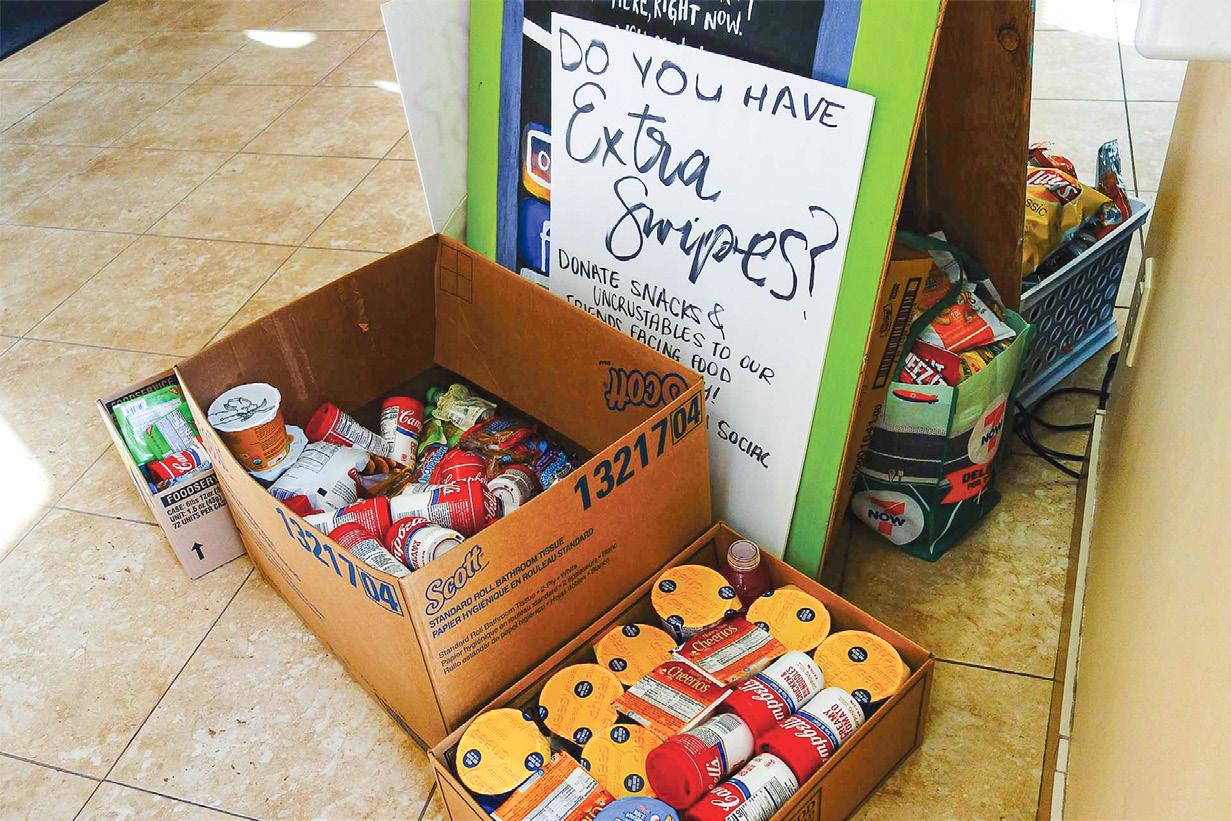
By Yoleni Paulo @csucollegian
Every week, Colorado State University international students line up outside the Rams Against Hunger food pantry — one of the few support systems they have in a foreign country. Food insecurity among college students is a serious issue, and international students are particularly vulnerable. Limited work opportunities, high living costs and a lack of access to government aid leave them with few options. On CSU’s campus, the Rams Against Hunger food pantry
has become a vital resource, offering free groceries with items such as canned food, fresh fruits, vegetables and pasta to those in need.
The pantry has been operating since 2021. As stated by the Lory Student Center: “Rams Against Hunger offers a menu of services that support students, faculty and staff experiencing food insecurity. Services include a food pantry, a meal-swipe program, pocket pantries and in-person assistance with navigating federal aid eligibility.”
Mike Buttram, the basic needs program manager, has a nonprofit background and a mission to reduce student costs by providing helpful resources. He recognizes
the unique struggle that international students face, many of which stem directly from their visa restrictions.
“Often, Americans, at least, have this perception that the people who come from other countries to study here must be wealthy, and they don’t understand often that is not the case,” Buttram said. “They could be getting sponsored or grants and scholarships.”
The reality is that international students often face isolation, culture shock and pressure from back home. According to a study published in the Journal of Nutrition Education and Behavior in 2023, “Food insecurity prevalence among international college students has ranged from 5-37%.”
“They’ll come in and tell me their story, and it’s like everybody in their family is chipping in for this person, and that’s an immense amount of pressure for any person to shoulder,” Buttram said. “You don’t want to screw up, and you only work (so) many hours, and you’re going hungry and don’t say anything to your family.”
These overwhelming pressures can lead many international students to suffer in silence, not wanting to burden their families.
One student from the Middle East, who asked to remain anonymous for their safety, shared how they struggled to get started.
”When you’re here, you’re trying to build your life from zero,” the anonymous student said. “You don’t know where to shop; I used to have to Google and ask ChatGPT questions. I prefer Walmart because they deliver
from home, which is easier, as I don’t have a car.”
Transportation is a major barrier for many international students.
Joel Amralo, a graduate student from Ghana, came to CSU to study neurodegenerative diseases. One cultural barrier he faced was the limited access to culturally familiar food.
“I was finding it a bit difficult to access food because I do not have a car to move around,” Amralo said. “I learned that the closest African market is in Denver and is about a one-and-a-half-hour drive away from here. Initially, it has been very difficult because this is my first time experiencing American food.”
Another struggle Amralo faced was the difference in cost compared to home. But like many others, finding out about the pantry through a friend changed his experience.
“The pantry has actually come to my rescue,” Amralo said. “A friend recommended it to me. It has really helped reduce the financial burden.”
Amralo found comfort in seeing a diverse community at the pantry, which made him feel more welcomed and less hesitant to access the resource.
“It has also helped provide a sense of inclusion and community, in a sense that when you go there, there’s the diversity of individuals there,” Amralo said. “You know that you’re not alone there, and there were some Americans also out there.”
Greg Wymer, the director of international student and scholar services, emphasized the
added challenge of visa-based work restrictions.
“We find that international students, because of their limited work opportunities to work in the United States, sometimes do not have enough money to basically purchase food and some of the basic necessities,” Wymer said.
Raising awareness remains a key challenge. Most students find out about the pantry through word of mouth. Wymer said the international student program offers a safe and open environment where students should feel comfortable seeking help.
“One of the main supports (is) we have our advisers meet with a lot of students on a daily basis just to revise their information on what might be possible,” Wymer said. Buttram continues to push for growth and inclusivity and is striving to find more ways to support international students who may feel out of place in America.
“I would love to have more culturally sensitive or culturally appropriate foods,” Buttram said. “I’d love to have a grab-andgo meal type of thing, an option where we could have a sign-up sheet, and you could sign up three times a month for an emergency meal.”
In an unknown world where prices are rising and jobs are more scarce, the Rams Against Hunger food pantry has become more than just a source of food; it’s a critical support system that ensures international students don’t have to choose between meals and their education.
Reach Yoleni Paulo at life @collegian.com.
By Yoleni Paulo @rmcollegianspts
When most people think of martial arts, they picture fast-paced combat, punches, kicks and intense highenergy fighting.
But in Colorado State University’s Campus Recreation Aikido class, the pace is slower, the philosophy is nonviolent and the goal isn’t to overpower but instead redirect the energy opponents bring toward the self. Aikido teaches more than selfdefense; it reveals the spiritual side of martial arts, inviting students to embrace its core principles of peace, balance and control.
CSU recreation offers Aikido as a specialty class — 10 weeks for the price of $120. Students interested in exploring the practice may take advantage of the free trial week during the fall 2025 semester, where they can participate in a class at no cost.
Sensei Victor Hung founded Aikido of Colorado in 2010 and currently serves as an Aikido instructor at CSU. He has been teaching the martial art for over a decade and is a fifth-degree black belt, sometimes referred to as a godan. His journey with Aikido began in his early 30s. Prior to this, he dabbled in tae kwon do during his college years, but Aikido is where he found his passion.
“I wanted to get back into martial arts,” Hung said. “I was looking for a martial art that provides a meaningful aspect that align(ed) with my way of thinking at the time.”
What drew Hung in was the difference in principle from Aikido compared to other martial arts, which are focused more on assertive techniques.
“Most martial arts I have seen teach you to hit first — ‘Destroy with violence,’” Hung said. “Aikido teaches you to live a harmonized life with your surroundings while promoting peace.”
Graduate Lexy Steiner and firstyear Casper Harvey are both students in Hung’s class at the CSU Student Recreation Center. Steiner has been practicing Aikido for three years, and for her, the class is not only about learning a new skill but being part of a welcoming community.
“I really enjoy an opportunity to have a social group of friends that are very supportive but also just to have an opportunity to discipline my mind, discipline my body and get a nice little workout in and learn how to protect myself at all times,”
Steiner said.
Harvey, on the other hand, started Aikido this semester, as he’s currently minoring in Japanese. While he also plays sports such as tennis, what sets Aikido apart for him is its unique emphasis on connecting the mind with the body.
“I really like being able to connect with my body and feel it in a different way, especially because working out in other ways, I feel like I don’t feel the same connection with my body,” Harvey said. “If you’re working out in the gym, you’re not thinking about your center, how your body moves.”
At the heart of Aikido’s philosophy is the concept that movement isn’t just physical but intentional and fluid, always grounded in a strong connection to one’s center.
“Our students learn how to move, receive and redirect any attacks back to the aggressor while protecting themselves and the aggressor, all in a circle motion,” Hung said.
Initially, Harvey struggled to adjust to learning Aikido. However, with a supportive environment fostered by his teachers, he was eventually able to make progress.
“Starting was hard; it can be difficult to keep pushing and keep coming back and get the motivation,” Harvey said. “But I kept coming back because I knew I had people who wanted to teach me, and I knew I wanted to learn.”
Beyond the physicality of the sport, there is a spiritual side. According to the Aikido Association of America, “Everything in Aikido training is meant to develop not only a strong individual, but one with the wisdom and energy to positively benefit society.”

For students, it acts as a stressreliever, allowing them to destress from their busy schedules twice a week at training.
“I would say that it has helped me to be more disciplined in the way that I handle stress in life,” Steiner said.
“I have a tendency to really attack problems head-on and kind of brute force my way through them. Aikido kind of helps me to slow down and think my way through it, and think, ‘Is there a better way to approach this than just brute force?’”
Aikido’s emphasis on redirection of energy and self-discipline is something students are taught to apply in their day-to-day lives.
Hung’s class welcomes students of all levels, from beginners to advanced practitioners.
“In Aikido, we really focus on this mindset of, ‘Everybody’s a learner; everybody’s a beginner; everybody has something to learn from somebody else,’” Steiner said. “There’s not really an end goal besides just improving and getting better.”
Aikido is more than just another martial arts sport. Students aim to leave each class with improved techniques and physical strength as well as a clearer, more disciplined mind. Reach Yoleni Paulo at sports @collegian.com.

By Sophie Webb @sophgwebb
In volleyball, a loss only takes two points.
Those two points against Texas A&M led to the end of Colorado State volleyball’s 2024 season, and the completion of the year came with the departure of seven players, leaving just one main starter on the team.
“You’re always sad to see them go, right?” Head Coach Emily Kohan said. “They won championships. They were champions. … So it’s bittersweet when you say goodbye to them, but the
rebuild is fun, right? You have some young kids that have been developing and waiting their turn patiently, and you got some nice new transfers in here, and so it’ll be a different team, but the mission doesn’t change.”
Going into the 2025 season, the Rams are exercising a primarily new roster with nine new players, leaving them with the challenge of maintaining their legacy of being one of the better teams in the Mountain West and building chemistry early.
Five of 18 players on the roster are true freshmen — two of whom are still supposed to be in high school — which makes eight first-years in total, including redshirts.
“All young rosters come with some inconsistency,” Kohan said. “Those fifthyears were really, really consistent, night in and night out for the most part, and it’ll get there. You don’t get consistent without all the opportunities and reps. And we’ll get there, but we’ll probably ride some waves in the process.”
One of the bigger waves CSU was hit with was the number of offensive players who left. Most notably, Malaya Jones transferred to Southern Methodist, but the Rams also lost their two main middle blockers in Naeemah Weathers and Karina Leber.
Although the roster has not been set yet, one of the new players and middle blockers, Brenna Rowland, has already been showing promise in her position.
“The coaching staff and, like, the players have been so, so welcoming,” Rowland said. “I’m just so grateful because when you’re transferring, you don’t sometimes know what you can get, especially when it’s such short of a window. … I could not have asked for a better school to attend. And everyone is here for you.”
In CSU’s final home game of the spring season against Colorado, Rowland was one of the primary players in the victory against the Buffs with several kills and blocks, especially in the second and third sets.
Right there with Rowland, other players are beginning to assume more key roles, one of them being first-year outside hitter Karsyn Fetzer, who, besides Maria Brun, stayed in the
entire match and delivered multiple strong hits.
Although they have not yet delivered hits like Jones did, the outsides still have a long way to go before graduating.
“You watch the development of any of our kids that we just lost, and who they were their freshman year was far ... different than who they were in that departing year,” Kohan said.
Another talented player who transferred out was Kate Yoshimoto, leaving big shoes to fill. And after playing the majority of all four home spring games, Aine Doty seems to be the likely replacement, with Sydney Black occasionally coming in.
Doty played in several games last season, progressively seeing more playing time as the season went on, and she is one of the few returning players who saw multiple minutes each game.
“We’re going to have nine new players on our roster,” Kohan said.
“And so, to put that many new pieces together and play quality volleyball, (I’m) really proud of the way our spring kind of ended here.”
But when there is such a large influx of players, the need grows for an experienced player to lead, and that has naturally fallen onto Brun.
Despite only being in her first year with the team, she was constantly on the court in 2024, starting in 25 of 31 matches, and was the team’s main outside hitter besides Kennedy Stanford. In Brun’s first year with CSU, she had 156 kills, helping the team go 20-11 overall.
“I want to be, like, (a) leader inside the court,” Brun said. “I feel like the team also needs that and, well, I’m happy to help the newbies and keep playing.”
But a leader isn’t always just related to skill. Something Weathers provided the team before graduating was consistently maintaining a positive spirit. No matter the play or outcome of the game, she cheered on her teammates, and firstyear Jordyn Tynsky is already emitting that positive energy during matches.
Not only can Tynsky come in and clinch when the team needs an ace, but she also lights up the court with her cheers and attitude.
The Rams do not have an easy start to the conference portion of the season, as their first game is a Border War match against Wyoming. CSU has to work overtime to not only win but build the chemistry that can be harder to curate with a newer roster, and this is when a leader, whether it be from spirit or skill, is necessary.
“I think we were able to just keep getting better and building off each other,” Rowland said. “I saw such an improvement from our first game against UNC to now. We’ve kind of picked out some people that can hold the huddle and bring people together, and everyone has special things they bring to the court, and so I think we’ve really maximized all of that.”
Reach Sophie Webb at sports @collegian.com.

By Sophie Webb @sophgwebb
With multiple clubs and local organizations lined up on the Lory Student Center West Lawn promoting sustainability, it could only mean one thing: Earth Day.
Colorado State University has an annual tradition on Earth Day of throwing a festival celebrating sustainability and raising awareness for the environment in hopes of not only educating students but encouraging action, whether it is joining eco-friendly organizations or writing a letter to Congress.
One organization helping students take action is the Student Sustainability Center. The SSC assists students in starting their own sustainability-based projects, whether that be through finding resources, funding, support or connections.
“We’re always looking for more faces at our weekly meetings and also to start up new projects,” said Raegan Synk, the SCC’s media and marketing coordinator. “I think a lot of people don’t know we are here and that we can help start these projects. ... And so yeah, we’re just here to help spread sustainability mindset, right?”
Currently, the SCC is focused on three main projects: the Patchwork Project, the Community for Climate Anxiety and the Native Plants Project.
The Patchwork Project — previously known as the Patchwork Initiative — focuses on sustainable fashion, while the Community for Climate Anxiety fosters a community-based group for people to talk through negative feelings associated with climate change. The Native Plants Project focuses on growing native plants both in and around campus.
“We are a very casual group,” Synk said. “We’re just here to make sure everyone has support and the resources that they need to thrive and be sustainable. We have so many things, and we’re just really here to help people be their most sustainable self.”
To put on this event, the sustainability department within Housing and Dining Services partnered with the President’s Sustainability Commission.
Chandler Barger is the sustainability intern for Housing and Dining Services and helped facilitate the event by contacting local and student organizations as well as booking the band Cactus Cat to play while students visited different tables.
“We had a lot of excitement around the event,” Barger said. “There are a lot of student orgs that are really committed to sustainability. … I think the biggest hurdle was just — this is my first year planning it — learning all of the logistics of all of it.”
At a time when communities are polarized, CSU’s Earth Day Festival worked to unite people and provide outlets for those who are concerned about the future of sustainability and the climate. While the SSC has the Community for Climate Anxiety, another organization dedicated to participating in the discussion surrounding climate change is the Citizens’ Climate Lobby.
It aims to get students thinking about climate change because once awareness begins, it is easier to start building conversations on the topic and finally take action.
The CCL even featured an interactive part that asked, “What actions will you do?” Students could place a button in whatever action they planned take next regarding the climate, such as using less fossil fuel or beginning to talk about climate change.
“We are encouraging chapter members and other people whenever we can to write their members of Congress,” Fort Collins CCL leader Jim Greuel said. “Several times a year — and one time a year in Washington D.C. in person — we actually lobby Congress. … We lobby both parties equally and go in there with respect and try to find some common ground.”
Greuel is not just fighting for his community. He said the issue matters to him, as he is a father of two and has the potential to be a grandfather someday, so he raises awareness with future generations in mind.
If attendees didn’t want to change their routines to live more sustainably, there were companies promoting their desire to help, such as Compost Queen.
“We’re the local food waste recycling service here in Fort Collins,” employee Max Poling said. “We operate the only food processing facilities that are open to the public in Larimer County. ... And with that, we’re picking up food waste from homes and businesses, taking it to a decentralized network of small farms around Northern Colorado, and we’re turning it into a high-quality food scrap compost.”
Compost Queen processes food through aerated static pile composting — a heat-induced composting process that allows them to accept meat, dairy, bones, cheese and all produce items.
At a university that praises sustainability as a core value, organizations and activities at the Earth Day Festival served as a reminder that change is a possibility; there just needs to be action taken to get there.
“Putting on a festival like this lets us connect with people who would be less educated about the resources that are available to them,” Poling said. “So it’s awesome to connect with all the programs, see everything that’s going on here (and) to be part of the change that we want to see in the world and take climate action.”
Reach Sophie Webb at life@collegian.com.
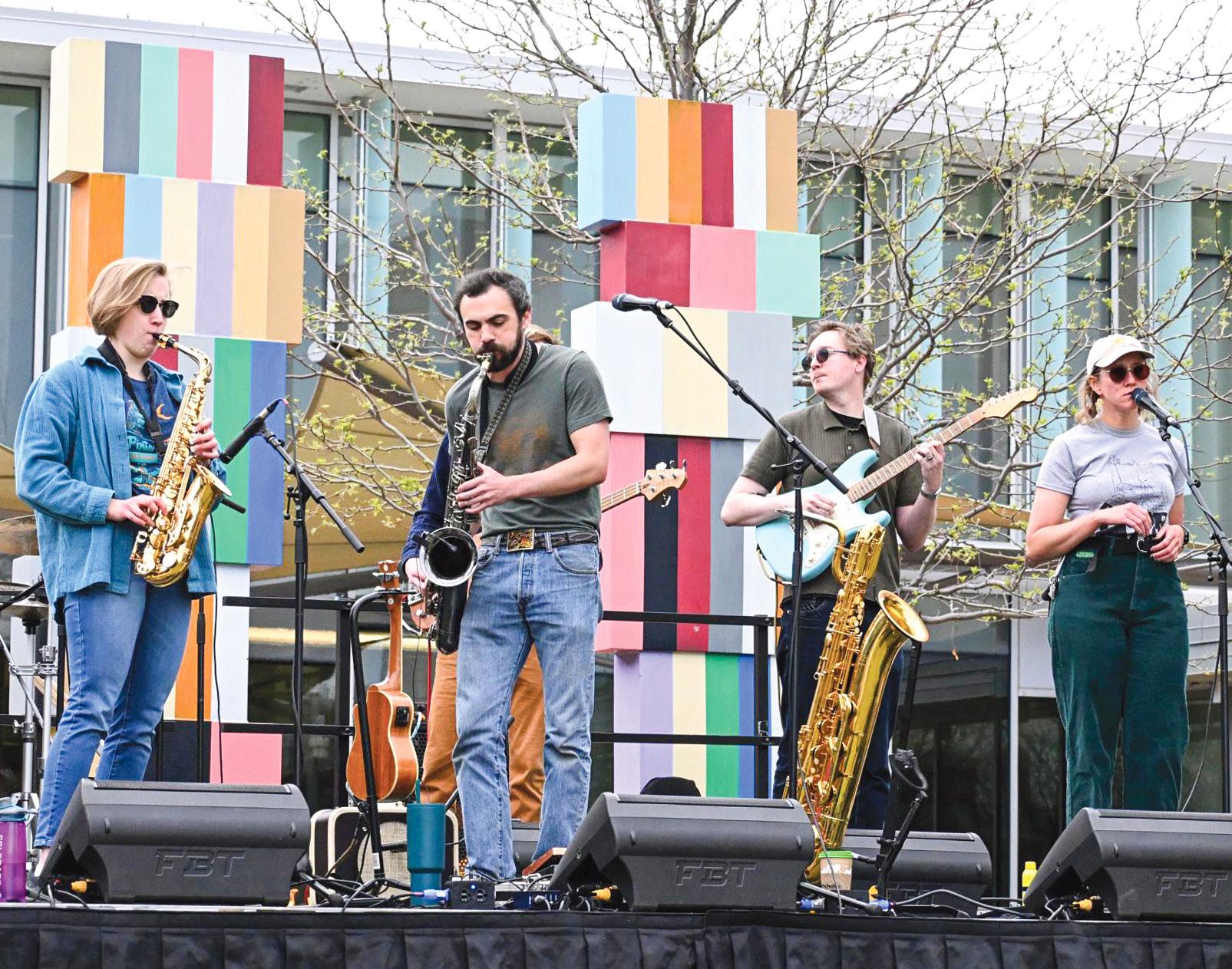
By Mason Ford @mason_ford2891
With the regular season coming to an end, Colorado State tennis needs the Mountain West tournament to turn the year around.
It hasn’t been an easy season for the Rams — with injuries early on, it felt like an uphill battle from the beginning.
“Right now, it’s (about) getting rest, recovery and recharging,” head coach Mai-Ly Tran said. “We’ve put in the work all the way up to this point, and as soon as we recover, I think we’ll be ready to go.”
Despite their overall record, the Rams are entering the postseason optimistic. Going 4-17 on the season and 2-8 in the conference has stung for the team,
but the numbers don’t tell the full story.
The Rams are shifting their focus on the tournament and how they will play, as the regular season is already behind and it is time to look forward.
“We just need to fine-tune some things and practice and get mentally ready,” Tran said. “We’ll see who we end up playing, and then we can prepare against that match.”
Despite losing more often than not, CSU managed to keep all of its matches close.
The Rams typically brought matches to three sets or overtime and fought until the very end. Their matches frequently boiled down to a few moments that decided between victory and loss.
“I think it’ll be really cool to see everybody in a neutral site where anything is possible,” Tran said.
“I’m confident in us, and we have good chances, and I’m excited to make upsets in the tournament. We’ve been putting all the work in, so now it’s the last push, and as my coach likes to say, ‘It’s a marathon, not a sprint.’ So hopefully we peak at the tournament.”
VICTORIA
ERECHTCHENKO TENNIS PLAYER
Sarah Weekley and Victoria Erechtchenko are a doubles pair who will look to make a big difference in the tournament.
The duo shines playing under pressure. They don’t let tough situations get to them and are constantly reliable, coming through with valuable doubles wins.
“In the beginning, we played with no expectations of how we would do scorewise, and that’s something that we’ve continued throughout the whole season,” Erechtchenko said. “We love pressure points because they’re no pressure for us. It’s just pressure for (our opponents).”
The duo began playing together this year, quickly making a strong connection. Every week, the two seem to come back onto the court stronger than ever.
“In the fall tournament, coach just randomly put us together because both our doubles partners graduated,” Weekley said. “So it was just us, and then we just never thought it would work, and somehow it just did. Every match that we played after that, we were stronger.”
The pair has won eight of their last 10 full matches. In unfinished matches, the two are consistently in control when the match is called.
Weekley and Erechtchenko are 14-8 on the season and hope to carry
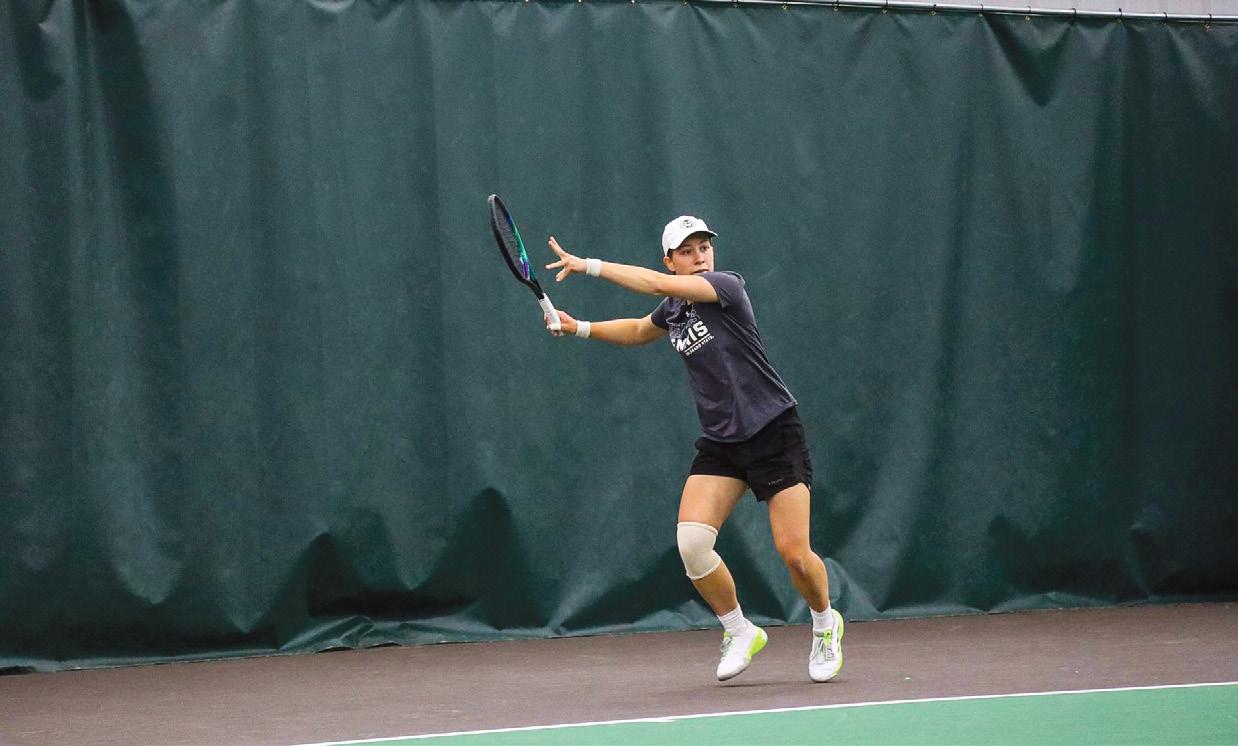
the momentum they’ve gained into the tournament.
“I’ve just loved seeing them improve every single match, and I think that it’s just interesting how they came together,” Tran said. “We never imagined how successful they would be, but as soon as they got together, it made so much sense. … They complement each other.”
This season has set the players up to make big upsets in the tournament, proving the team’s overall record isn’t everything. The Rams have shown all season they have what it takes to win, but now they must prove it in the tournament.
“I’m confident in us, and we have good chances, and I’m excited to
make upsets in the tournament,” Erechtchenko said. “We’ve been putting all the work in, so now it’s the last push, and as my coach likes to say, ‘It’s a marathon, not a sprint.’ So hopefully we peak at the tournament.” The Rams have high hopes going into the conference tournament this week. Despite not having an easy season, the drive to turn that around will surely shine through in the tournament.
CSU tennis is on upset watch; all season, it has played its games close, but now it is time to win.
Reach Mason Ford at sports @collegian.com.
1. Victoria Erechtchenko returns the ball in her singles match during Colorado State University’s competition against the University of Wyoming April 13. CSU lost 4-1.
BY MASON FORD THE COLLEGIAN


By Riley Paling @rileypaling
Colorado State University’s department of physics is entering a new chapter under the leadership of Kristen Buchanan, who was recently appointed department chair. A longtime faculty member and expert in experimental condensed matter physics, Buchanan now leads one of CSU’s most research-active science departments with a focus on growth, collaboration and student success.
Buchanan stepped into the role following Jacob Roberts, who now serves as interim dean of the College of Natural Sciences. Her appointment comes at a pivotal period for the department, as it looks to expand research, improve undergraduate and graduate programs and deepen interdisciplinary connections across campus.
Buchanan emphasized that one of her top priorities is “helping to look for opportunities to try and further our goals of doing amazing research, of supporting students.”
Expanding on the goal of supporting students, Buchanan has been setting up an undergraduate curriculum
committee to make sure students provided with the best tools and knowledge as possible before entering the next stage of their careers.
“I also set up an undergraduate curriculum committee because one of the big priorities within our department is to try and make sure that we’re looking at what kinds of skills students need when they graduate and making sure that we are trying to align our program for that,” Buchanan said. “So we want to try and modernize our offerings. We’ve added a computational course, now we’re trying to weave that into some of our advanced courses.”
Buchanan has been a member of CSU’s physics faculty since 2008. In that time, she earned national recognition for her research on nanomagnetism, studying how magnetization behaves in nanoscale systems with implications for spintronic devices and data storage. Her extensive background in both experimental work and simulation has helped position CSU as a player in cutting-edge materials research.
Buchanan is now focusing on leading the department as a whole, with a vision that extends beyond her own lab. One of her primary goals is to implement both small- and large-scale changes
for the department. Among the small changes is the installation of new carpet in the physics department building. In contrast, larger changes involve ensuring that the curriculum is designed so that all students — from undergraduates to graduates — can achieve their goals and be adequately supported in their educational journeys.
“We’ve managed to secure some funding for updating the undergraduate laboratories, and so that’s something, and we’re pretty excited about that,” Buchanan said. “We’re adding some new labs to ... our (level) 200 and up undergraduate laboratories.”
The department of physics currently supports more than 100 undergraduate students, numerous graduate students and a dynamic research portfolio. Faculty-led projects range from quantum optics to atmospheric physics, and the department has recently made strides in improving its teaching labs and curriculum.
Another motion that has been in place since Buchanan became chair is a computational physics class.
“We ran it first as a pilot program two years ago, and then it ran last fall,” Buchanan said. “It’s now part of our undergraduate program. ... They learn
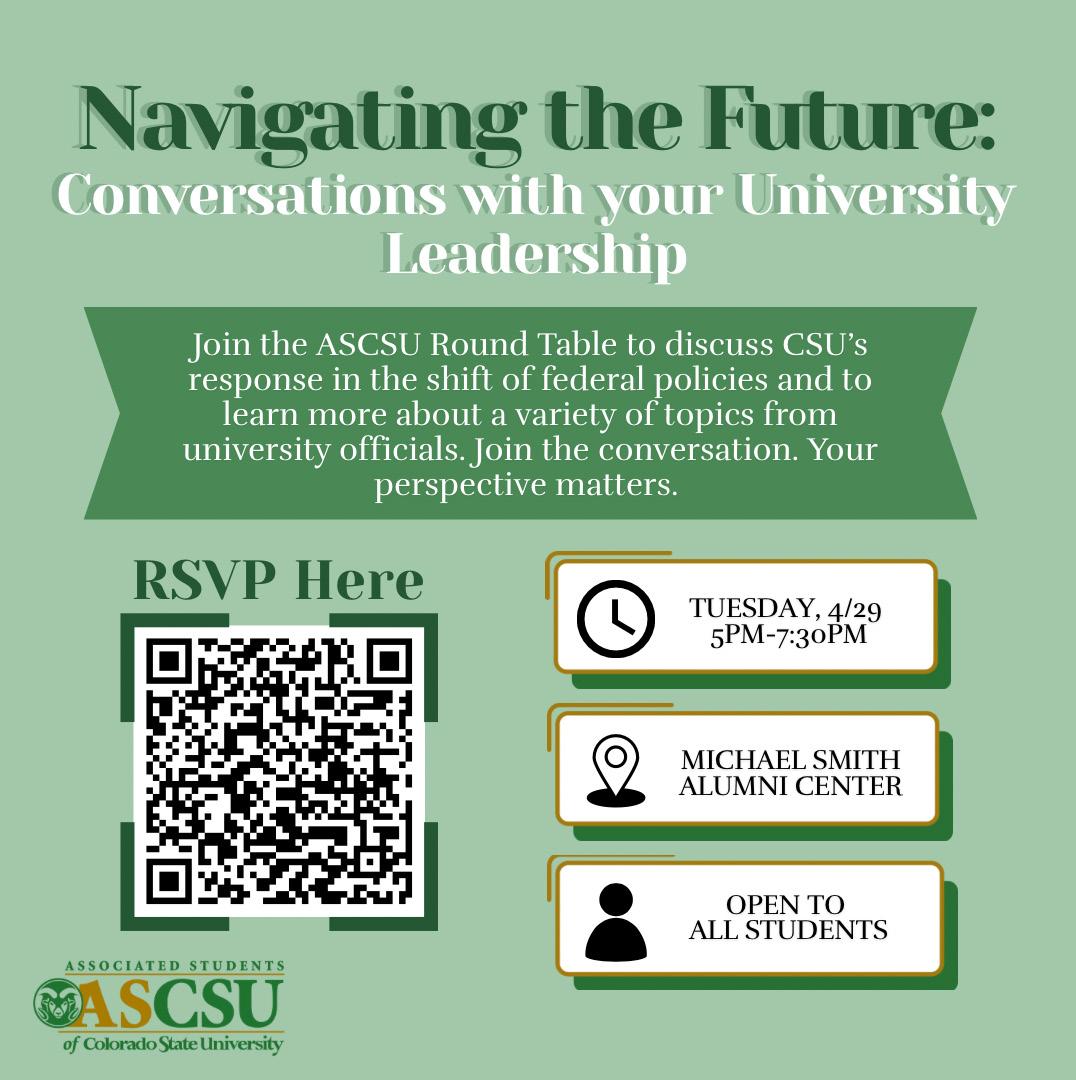
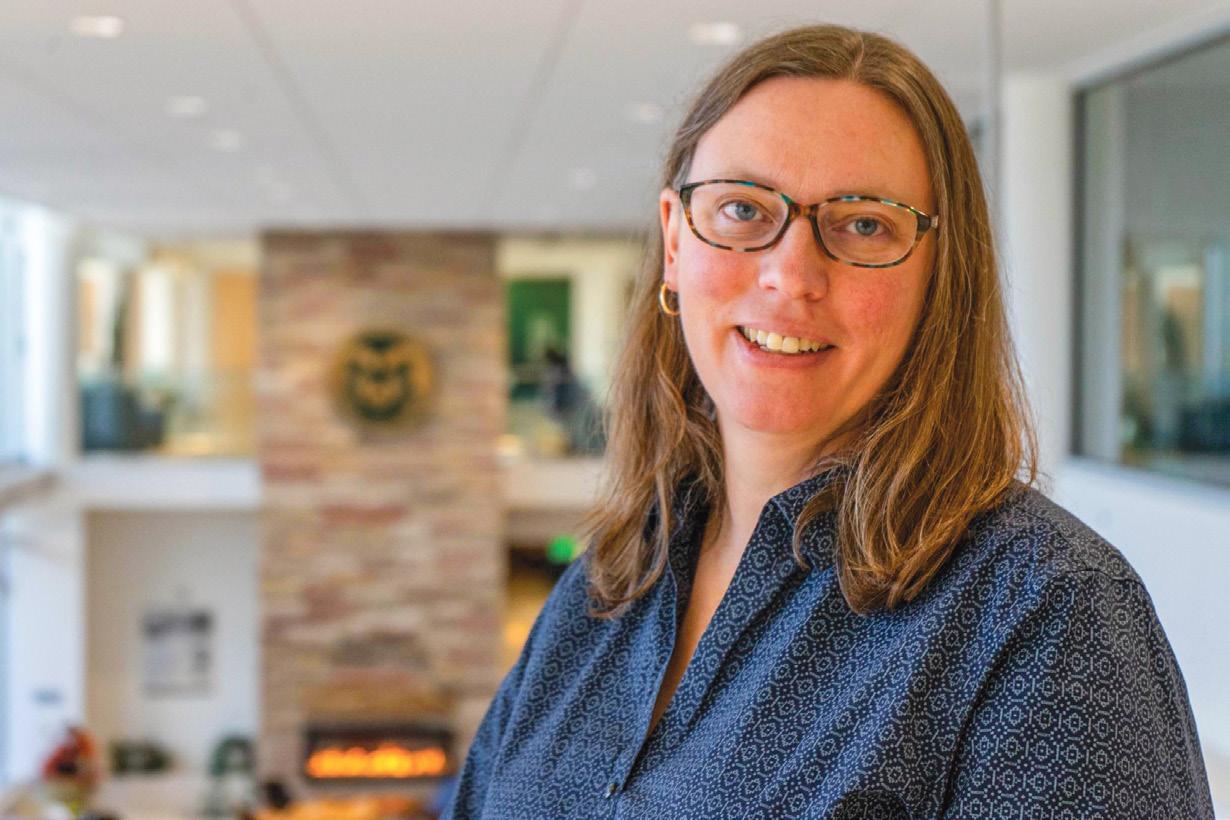
how to use Python to solve physics problems and to also learn new tools for things like plotting and analyzing data, which is super useful for anything that they’re going to do going forward, and it’s immediately useful for the undergraduate laboratory courses.” Buchanan also plans to maintain the department’s strong tradition of public outreach, including
events like CSU’s Little Shop of Physics.
Other physics faculty members have expressed strong support for Buchanan’s leadership. Many say she brings not only scientific expertise but also the ability to listen, build consensus and guide longterm planning.
Reach Riley Paling at science@collegian.com.

By Robert Sides @csucollegian
Colorado State University’s department of occupational therapy ranked third in the nation on U.S. News’ list of top health schools for 2025.
The program rose from No. 7 on the 2024 list to No. 3, beaten only by Boston University and the University of Southern California.
“We were very excited to hear that news,” said Anita Bundy, head of the department. “We’ve been ranked in the top 10 when this ranking began, but we were always ranked at around No. 6 or 7.”
The occupational therapy program is community-oriented, in contrast to the typical hospital setting of many other colleges’ OT programs, which are usually attached to medical centers. Such a distinction affects how the program is taught.
“Here at CSU, the big medical center in Colorado is down in Denver, so that distance means that our curriculum is different,” said Andy Persch, an occupational therapy instructor. “What (students) do here in Fort Collins is
they’re in hospitals and clinics when they go do their fieldwork, and (they do) capstones out in community settings. But that means that in terms of our teaching and in our research programs, we look for community settings — the places where we can interact and engage with our clients that are not necessarily focused on the medical setting.”
The community-based program allows for a varied and rounded curriculum, involving working with older adults and working in pediatrics and doing fieldwork.
The curriculum emphasizes fieldwork, where students get hands-on therapy experience in a variety of settings. It is designed to introduce students to fieldwork as early as possible.
“Fieldwork is an opportunity to gain experience and demonstrate these skills and knowledge that you’ve picked up in a hands-on and very interactive environment,” said Malachi Haynes, an occupational therapy doctoral candidate.
“Some of the other programs within the region will save all your fieldwork for the very last year. At CSU, we have fieldwork as early as your second semester. That will be in your first fall semester, since we start in the summer, and we get fieldwork opportunities in an abundance of settings.”
Education in occupational therapy has evolved over the years to ensure an adequate education for students. OT programs accredited by the American Occupational Therapy Foundation were required to transition to the entry-level master’s in 2007, although CSU started to offer master’s degrees in OT decades prior. A similar trend is happening with OT programs that are shifting from the master’s to the doctoral level. CSU switched from entry-level master’s degrees to occupational therapy doctorate degrees in 2022.
Occupational therapy programs still face nationwide enrollment challenges due to health care education strains from the COVID-19 pandemic. CSU’s occupational therapy program continues to see strong applicants, especially from around the Mountain West and Great Plains regions.
“There aren’t a huge number of OT programs in the Mountain West region,” Persch said. “There are certainly many, but they’re quite spread out. There are a couple in Colorado, and then you’re talking about Nebraska, Kansas, Utah and so on. Students are interested in coming to Colorado. They’re interested in the mountains and the outdoors.”
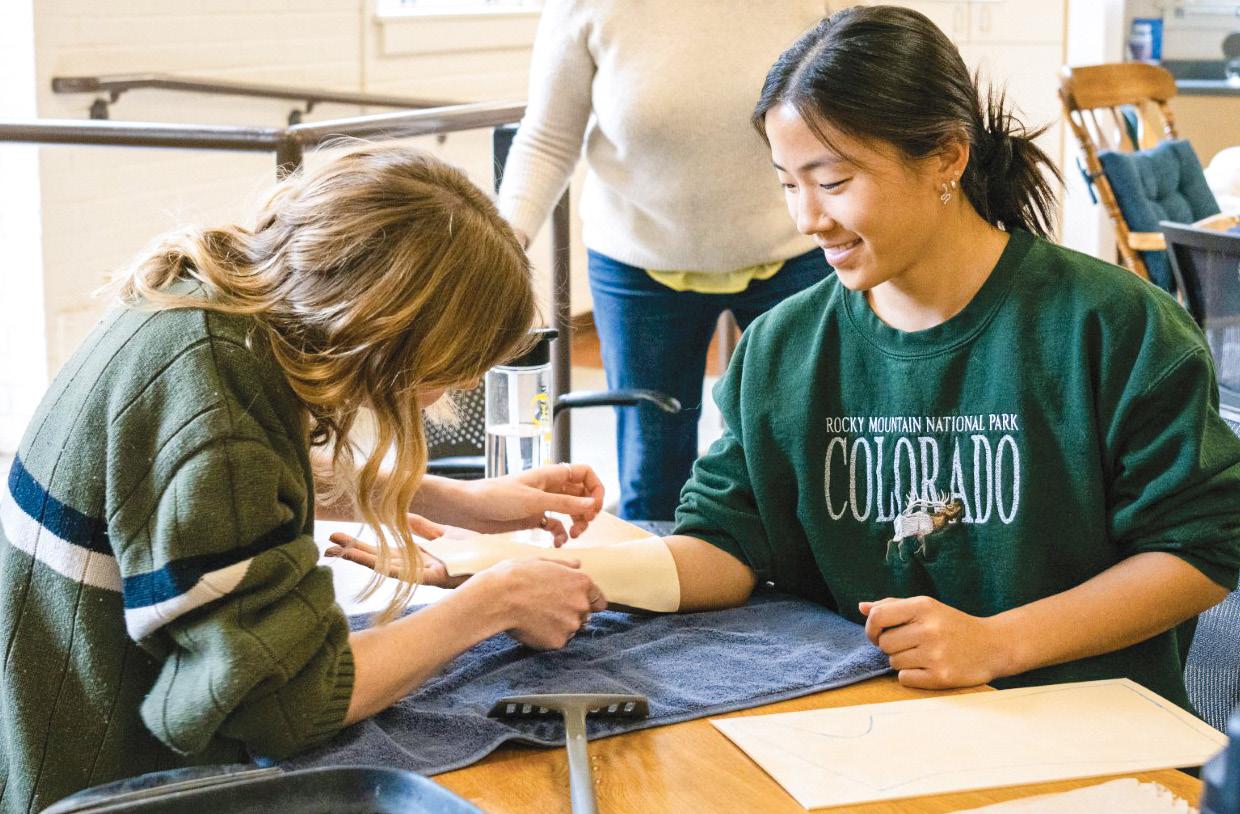
The program’s ranking is upheld by its research in addition to quality education. The program, as well as four of its assistant professors, has received grants from the AOTF. The faculty involved in research receives some of the highest praise from the program’s students and alumni.
“I just really want to reiterate that the faculty and staff here, from the open-door policy, almost all of them
are conducting research,” Haynes said.
“Almost all of them are still currently practicing OT, and that all means a lot.
That’s the reason why we jumped up in rankings, but they’re still very grounded and down-to-earth. With all of them conducting research, practicing and teaching, they still find ways to make everybody here feel welcome.”
Reach Robert Sides at science @collegian.com.
By Katie Fisher @csucollegian
The human body is a beautifully complicated system of muscles, bones and tissue. It is an anatomical marvel best explored through physical examples, a reality experienced by Colorado State University students in the gross human anatomy laboratory.
Located on the fourth floor of the Health Education Outreach Center, the 5,000-square-foot lab was constructed in 2019 to accommodate the growing need for lab time utilizing human donors.
“Before this lab was built, human and animal anatomy classes shared the same space, limiting student access to specimens,” said Kenny Ivie Jr., senior anatomy instructor.
The space can comfortably accommodate 100 students, 30 donors and 10 faculty and teaching assistants. Floorto-ceiling windows wrap around three walls of the laboratory and are specially designed to dim and brighten, mirroring the time of day.
Every detail of the facility was specifically designed to produce its calm atmosphere, as Tod Clapp, the College of Veterinary Medicine and Biomedical Sciences associate dean for academic and student affairs, explained.
“This lab has 30 air exchanges per hour,” Clapp said. “It is almost below the smell threshold. … There was significant investment into CFD modeling so that we could look at airflow, anticipate airflow and make sure anything that could potentially be deemed harmful doesn’t cross the
breathing space. It is the benchmark facility in the country.”
Hundreds of students pass through the doors of the lab every semester across seven courses, including undergraduates.
“We have about 700 students go through every year, which is unprecedented in the western half of the United States because those students are undergrads who get the opportunity to learn from human specimens in a team of four with a real human cadaver,” Clapp said. “That’s unprecedented.”
Students are informed of the selfless weight of donors’ decisions, a notion kept at the forefront of their minds throughout the entire semester.
“We always talk to the students about (how donors) gave to society twice: once while they were alive and once after,” Clapp said. “And the students buy into that, and the students do a really good job.”
Donors’ cadavers are directly regulated by the Colorado State Anatomical Board, which is housed in the University of Colorado Anschutz Medical Campus, where they are embalmed and stored for over nine months. Once transferred to the gross anatomy lab, as Ivie Jr. explained, they are stored in a cooler capable of holding over 40 individuals.
The state anatomical board works directly with both the individual and family to guarantee everyone involved in the decision is properly informed and in agreement.
“These people wanted to be here,” said Corinne Wilson, biomedical sciences graduate student. “They chose to be here.
It’s (a) very extensive process between them and the families, and both parties have to agree.”
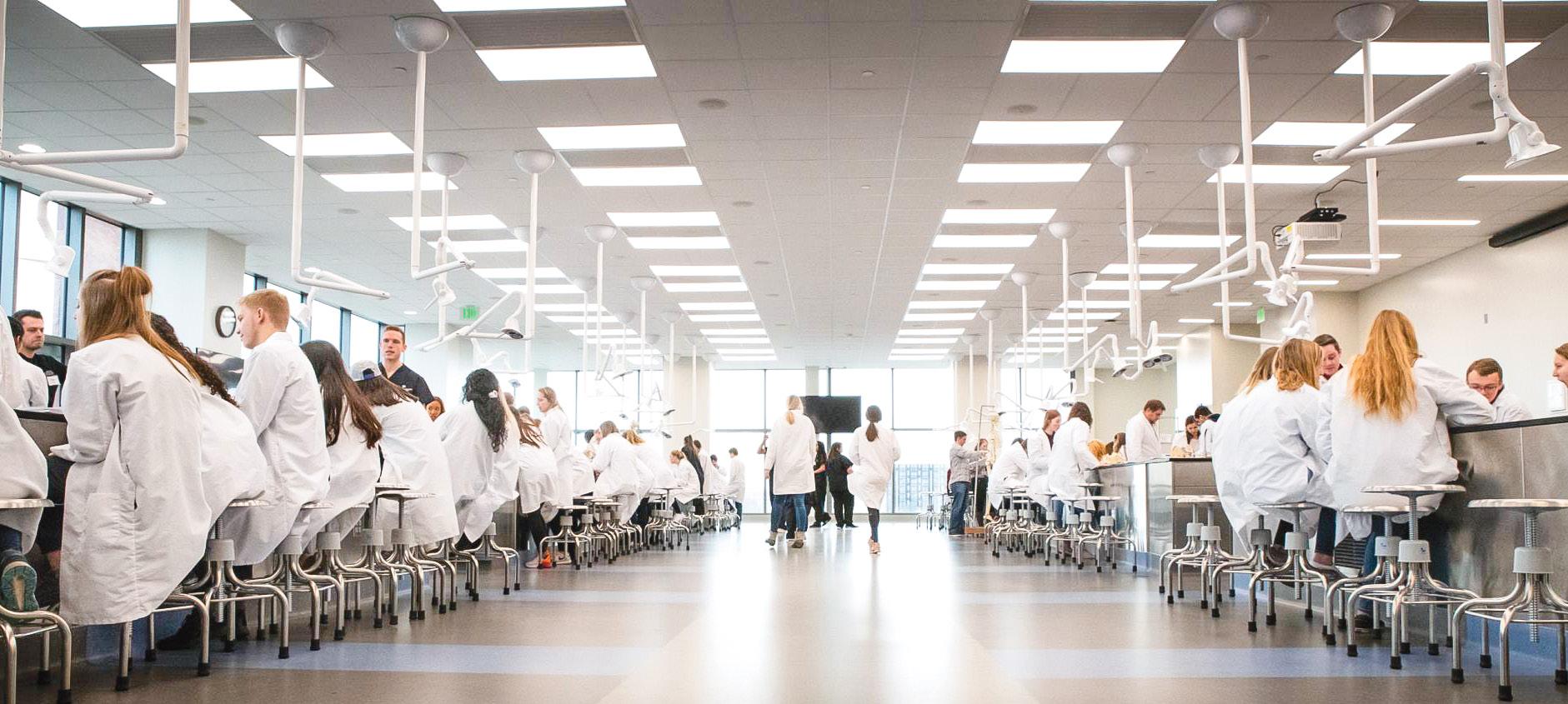
A single donor will remain with the laboratory for two years and aid in the learning of 1,000 to 2,000 students.
Learning anatomy in a physical, engaging environment can better educate students as they translate their knowledge from the textbook to the real anatomy of donors.
“Learning anatomy with real donors gives students a hands-on experience that can’t be replicated by textbooks or software,” Ivie Jr. said. “They can physically feel the differences between structures like arteries and veins and learn to identify anatomical relationships across multiple donors, rather than memorizing a single example.”
Students’ perspectives mirrored instructors’ observations, biomedical sciences undergraduate Maya Jones said.
“Getting to see the physical donors and being able to compare that to literature and the textbooks is just such a profoundly real experience,” Jones said. “Getting to see the structures and how they connect and what things branch from other things, I think, gives you really the whole picture.”
Graduate teaching assistants also play a critical role in the laboratory, guiding current students through classes in which they have previous experience. When advancing from student to teaching assistant, GTAs are trained to interact with an open-minded perspective.
“The teaching assistants are really taught to drive a fact-finding mission of well, ‘When they ask you a question, ask a question,’” Clapp said. “‘So what does this nerve say? OK, well, where is it coming from? OK.’ So what we’re really trying to drive is, if you don’t know what to do,
what’s our process of figuring out? … Because if we can get the students to leave with, ‘I can solve a novel problem,’ then we’ve succeeded.”
Lessons learned from the donors go beyond physical education and often encourage students to consider thoughts surrounding mortality and connectivity once skin is peeled back to reveal the complex system within.
“Donors teach students more than just anatomy — they reveal our shared humanity,” Ivie Jr. said. “Once the outer layer is removed, students realize how similar we all are beneath the surface. It’s rewarding to see students grasp how muscles, nerves and anatomical structures work together, and those ‘ah-ha’ moments when everything clicks are truly special.”
Reach Katie Fisher at science @collegian.com.




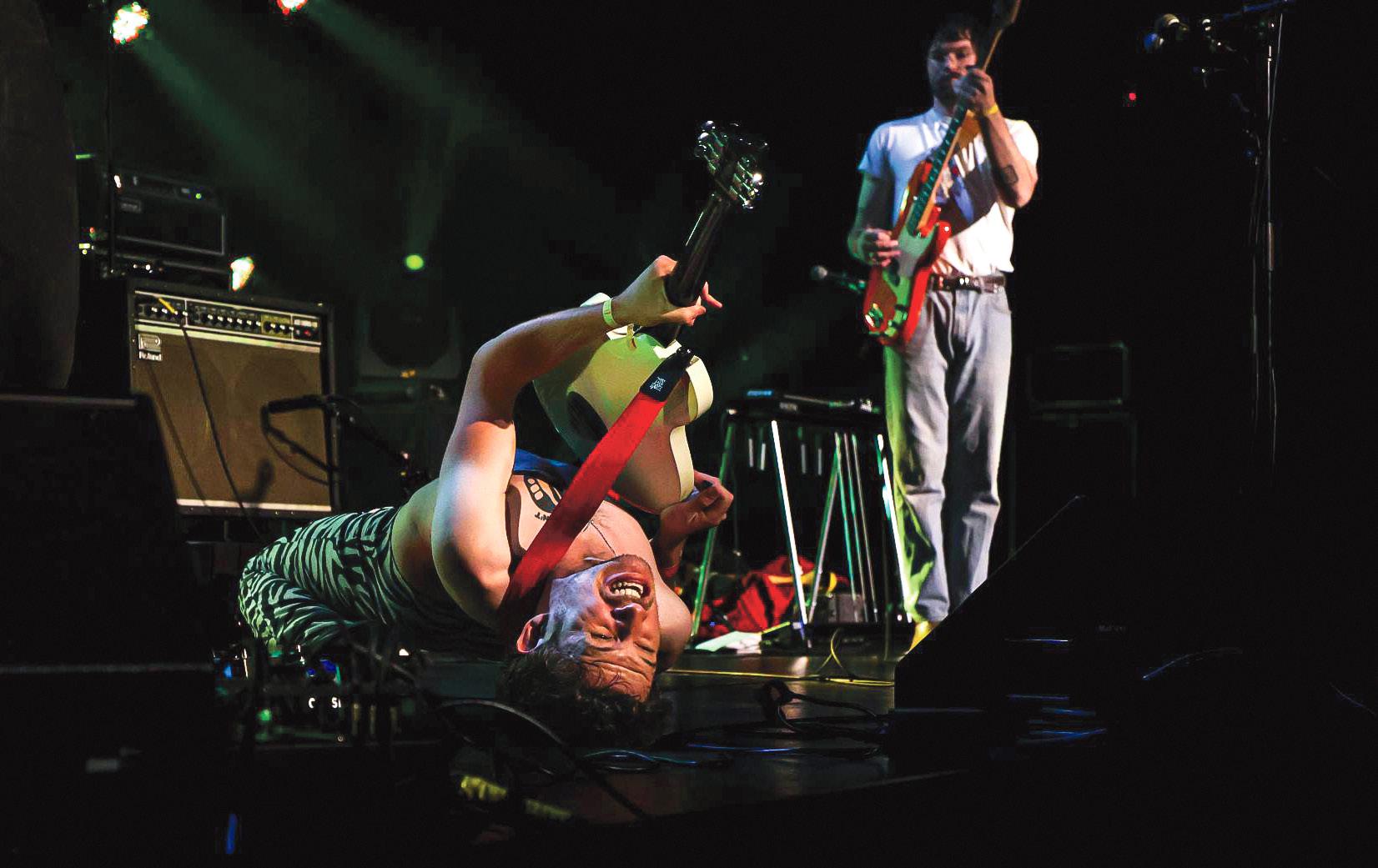




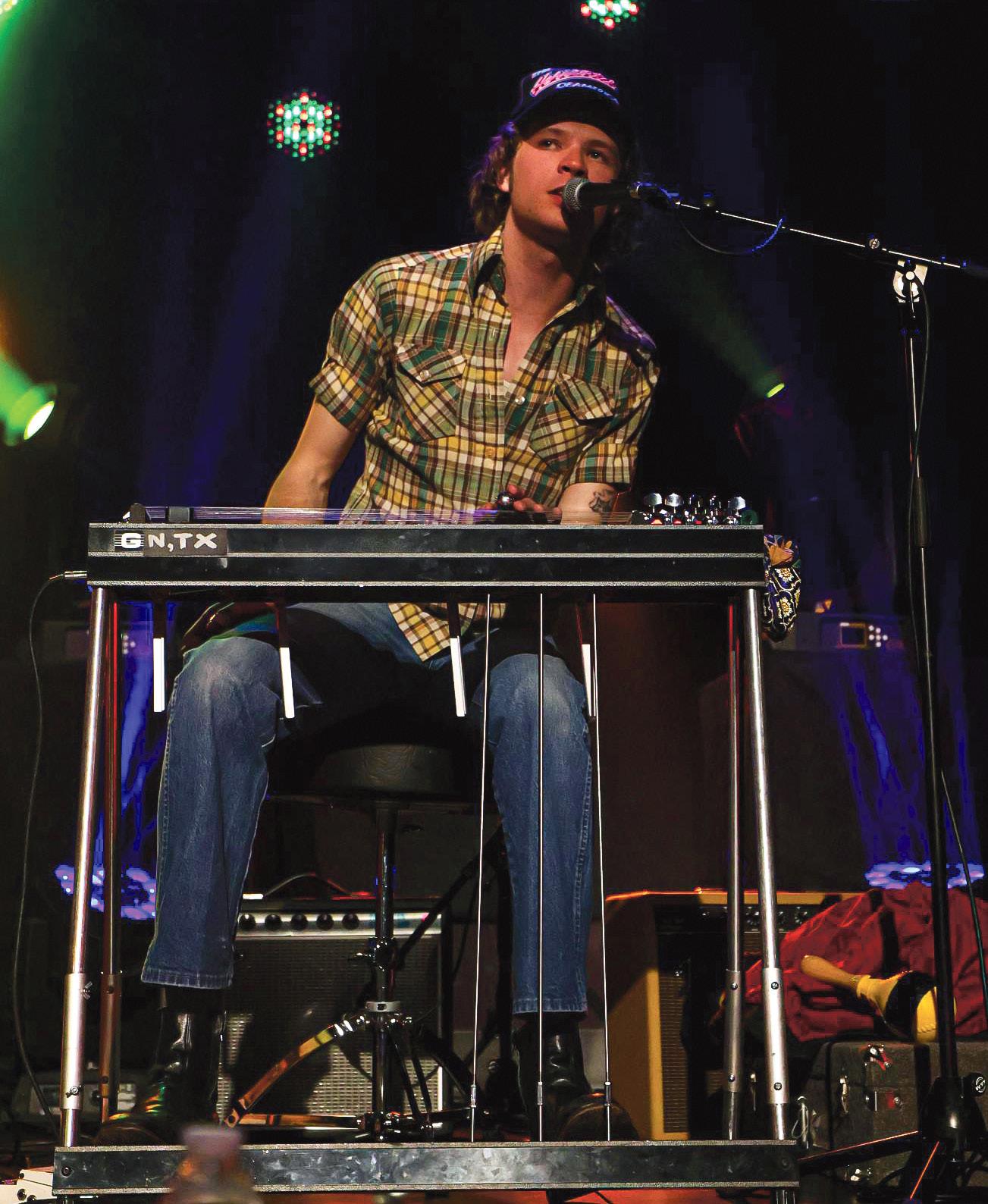

By Ruby Secrest @csucollegian
The annual Fort Collins Music Experiment festival was held April 1819. The festival, which has consistently pushed creative boundaries, brought the local and regional art community together and exposed audiences and musicians to new sounds, incorporating an additional component this year.
FoCoMX is a melting pot of music. With over 400 bands and over 35 stages scattered throughout Fort Collins, the festival has been coined, “The Biggest Little Festival in America.” From local favorites to first-time performers, the festival supports all artists, helping them reach new audiences.
The band backblunt took part in the festival, winning its spot at the Aggie Theatre through local radio station KCSU’s Battle of the Bands competition.
“I’ve been going to the Aggie to see bands since I moved to Fort Collins,”
said Jacob Maslowski, a member of backblunt. “We got to meet a lot of people, and that was definitely a huge moment for us.”
FoCoMX features multiple genres of music, but what makes the festival one of a kind is the community it has built among musicians and audience members.
“We get to see all of our bands play, and it’s a roller coaster of trying to get to the next show, trying to get to the next venue,” said Miles Mercer, drummer of local punk band Bitchflower. “But at the same time, it’s so fulfilling getting to see all of our friends play.”
By fostering a unique connection between bands and audiences, FoCoMX stands out from other festivals.
“We’re so lucky to be in a supportive community of not only music lovers but also just the bands in general — it’s really genuine and organic support,” Mercer said. “On top of that support, all these bands take an active interest in each other’s performance and creativity, and
(FoCoMX is) a really fun way to celebrate that.”
Within this strong community, several Fort Collins musicians took it upon themselves to express their support.
“Being able to create a safe space not only to express how (listeners) feel but also to feel recognized — I think that’s the beauty of art,” said Francis Altura, member of band The Athletics, when discussing his identity as a minority.
“No matter what background you come from, you can connect so deeply with what someone else is saying despite having a totally different background.”
Protest music has allowed musicians to create new spaces within the arts since the early period of folk music, lending a grounding hand in times of chaos and uncertainty. Not only did musicians at this year’s festival put on phenomenal performances, they also incorporated messages of strength and protest within their art.
“It could be as simple as sending out a message during a set, just saying,
‘We stand with you, we are on your side and we want to figure something out,’” Mercer said. “That’s one big thing about having a platform is that it can also maybe encourage people to not sit on the side.”
Many simple yet powerful messages were embedded in protest songs, encouraging audiences to take care of one another and not turn a blind eye to current events.
“We do have a duty to speak up (and say) that what is going on is not OK,”
Mercer said.
The messages established deeper connections between performers and audiences, delivering a sense of hope to Fort Collins.
“If the people that are coming to our shows can find solace in their one issue by listening to us, then we have accomplished everything we’ve ever wanted as a band,” Altura said.
Reach Ruby Secrest at entertainment @collegian.com.
“If the people that are coming to our shows can find solace in their one issue by listening to us, then we have accomplished everything we’ve ever wanted as a band.”
FRANCIS ALTURA THE ATHLETICS BAND MEMBER

By Aubrey Means @csucollegian
Colorado State University’s School of Music, Theatre and Dance opened its annual Spring Dance Concert April 18 and 19, featuring a variety of genres such as contemporary, ballet, modern, West African and flamenco.
The concert featured dynamic choreography and expressive movement, each telling a unique story through dance, music, costumes and lighting.
“It’s what I would call a repertory concert,” said Concert Director Judy Bejarano. “Instead of an eveninglength concert with one singular theme that is threaded through the whole thing, a repertory concert just means that there is basically anything that the choreographer has put forward.”
The concert featured original choreography by three staff members, Madeline Harvey, Susie Garifi and Godwin Abotsi, and a selection of student choreographers. Throughout the 90-minute performance, eight pieces were presented, designed to tell a story and evoke emotion.
The event showcased pieces about empowerment, loss, the current state of the world and a West African piece that was supplemented with live drumming.
Jordan Santry, a student choreographer, created a piece titled “Fractured,” which explored the combination of fluid and erratic movements. Her piece evoked an ominous and eerie feeling through the intense lighting, choreography and
stylistic choice of the dancers, who wore black lace masks.
“‘Fractured’ is about exploring personification of different versions of a person and how they can coexist and interact with each other,” Santry said.
Another student-choreographed piece, “Muyè,” by Hannah Essig, served as a call to action — a desire to seek dance and movement. Performed by five dancers, the piece explored the tension between repression and release.
Two dancers conveyed a rejection of movement, while the remaining three embraced it, creating a visual contrast between resistance and acceptance.
“There is a festering feeling that shows up many times throughout the piece,” Essig wrote in a snippet from the production form. “There are also feelings of joy, release, anxiety, etc. But while evoking these different feelings, I want the audience to feel as if the dancers are controlling the music.”
The first section of the piece played with energy and hesitation. When the music shifted to a more upbeat tone, the dancers responded with freer movements, representing the acceptance of rhythm and release. The piece as a whole maintained a strong sense of musicality, underscoring the power of movement.
Beyond dancing and choreography, the pieces had notable costumes and lighting that aided in the storytelling element.
“There’s so much more to it than just the dancers on the stage,” Santry said. “It takes a village.”
The dancers and choreographers worked closely with multiple departments to bring the concert to life. Lighting played a key role in shaping the mood of each piece, matching the beats of the music and using shapes and spotlights to guide the audience’s focus. Each performance featured a color palette, and in some cases, projections were used to deepen the narrative created by the choreographers.
Costumes, created in collaboration between choreographers and the costume department, also reflected and enhanced the vision of each work by representing the intended characters of the pieces.
“I focused on a layered effect,” Essig said regarding the costumes for her piece, “Muyè.”
Dancers wore baggy pants combined with gray, long-sleeved shirts with dark sleeves, adding contrasting dimension. To differentiate the moods, the two dancers representing the rejection of music donned cropped versions of the shirts, while the others’ shirts were tucked into their pants.
Visuals and press releases are a crucial aspect of the production that the School of Music, Theatre and Dance communications office assists with.
Within the intimate space of the University Dance Theatre, artistic movement and all elements of production enabled audience members to immerse themselves in the stories and performances.
“What brings the authenticity to the table is just something new, something fresh and something that evokes feelings
for the audience that maybe they’re not used to feeling or seeing,” Santry said.
The concert showcased unique movements and interpretations of traditional genres like modern and contemporary dance styles that may be unfamiliar to some audiences.
This personal approach allowed choreographers and dancers to express their own stories and emotions through movement. The concert’s high artistic level and nontraditional elements made for a captivating experience, allowing performers to fully demonstrate their creativity and talent.
“Dance is a temporal art form, I mean, goes by and it’s gone, right?” Bejarano said. “Of course, now we can video, photo it and document it in many, many ways. But oftentimes, that’s it. It’s kind of a moment in time when you’re
watching a piece, to give yourself that sense of, ‘I’m here now, watching this piece that will be gone.’”
The Spring 2025 Dance Concert provided a unique opportunity for both faculty and student choreographers to bring their artistic visions to life, revealing the range of emotions and stories dance can convey.
Through collaboration among multiple departments, the performance highlighted not only the talent of the dancers but also the importance of lighting, costumes and design in enhancing storytelling. Each piece captured a fleeting yet powerful moment of creative expression, demonstrating the beauty of dance as a temporary yet impactful art form.
Reach Aubrey Means at entertainment @collegian.com.

By Audrey Weishaar @csucollegian
Many people believe in cryptids: the Jersey Devil, the Loch Ness Monster — the list goes on and on. According to a 2021 poll, about 24% of the American public believes in Bigfoot, also known in parts of the U.S. as Sasquatch. And on April 16, Aggie Theatre brought the man, the myth, the legend himself — and his saxophone — to the people of Fort Collins.
Saxsquatch is a concert persona and exactly what the name implies: Sasquatch playing the saxophone. He
is currently on a tour across the nation, with his last show at the 4848 Festival in West Virginia July 19 and has been performing for around six years.
“My whole life is a performance, really,” Saxsquatch said.
His shows are high energy, where dancing and being loud are required. In fact, there are a few rules for these performances, which can be found on his Instagram page. These rules include the aforementioned requirements and treating everyone with respect.
The first thing people see when they walk into the Aggie is the stage. Lights are set up, and a disco ball hangs from the ceiling. A table sits on the center of the stage with all kinds of equipment

while trees dot the stage, indicative of Sasquatch’s native habitat.
The visuals of the show are done primarily by Saxsquatch and his team, and Saxsquatch himself programs the lasers from the stage. This allows for lasers that fit the show and the music, so Saxsquatch knows exactly how and when they should go on. They also use cryo effects, which are made of compressed carbon dioxide, to add to the energetic atmosphere.
“It’s quite an experience,” said Nic Ten Grotenhuis, Saxsquatch’s manager.
The behind-the-scenes work of Saxsquatch and Ten Grotenhuis is what pulls the whole show together. Ten Grotenhuis is the right-hand man to Saxsquatch and takes the lead on when releases will happen, suggests new songs, finds new artists to collaborate with, works with booking agents for tours and essentially ensures all goes well during the show, to name a few.
“We’ve put a lot of work into the show,” Saxsquatch said. “We’ve got a really awesome team.”
Prior to Saxsquatch coming onstage, the show was opened by T Biscuit. His performance consisted of guitar
solos, as he is a member of the band Steady Flow Funk. T Biscuit will open for Saxsquatch at the Denver and Colorado Springs, Colorado, shows.
The audience is a major factor in these shows and one of Saxsquatch’s favorite parts of touring.
“I love it when the crowd is loud and we get to go back-and-forth together,” Saxsquatch said. “It’s about everybody.”
The energy of the crowd was palpable when Saxsquatch entered onto the stage. People danced and sang along to the music, which was a combination of original works and covers.
“Saxsquatch shows are really just a place for people to come together and dance and have fun and believe in something,” Ten Grotenhuis said.
This includes ravers, believers, old fans, new fans and everyone in between. People in wizard and light-up costumes and even babies all jived to the music, with one thing in common: They were there to have a fun time with good music and surround themselves with people looking for the same thing.
These shows are very popular and frequently sell out or get close to it.
The crowd demonstrated their love for cryptids by dressing in things they believe in, leading to a highenergy atmosphere filled with likeminded people.
“It’s a really great, magical time where we all get to believe in each other and be together,” Saxsquatch said. These shows are made for people who like the strange, supernatural and fun.
“Put on a fun outfit, get ready to move your hips (and) move your feet a little bit, and you don’t have to have expectations of the show because the show will be good,” Saxsquatch said.
Saxsquatch’s performances are a space for all: people who like to dance, people who like music, people who like cryptids and, most importantly, people who like fun.
Tickets, merch and other information about Saxsquatch can be found on his website, Instagram, Facebook or Youtube, and his songs can be found on Amazon Music, Spotify or Apple Music.
Reach Audrey Weishaar at entertainment@collegian.com.
By Audrey Weishaar @csucollegian
Editor’s Note: All opinion section content reflects the views of the individual author only and does not represent a stance taken by The Collegian or its editorial board. Forty-eight billion people across the globe are on social media. That is 59.9% of the world’s population and a whopping 92.7% of all internet users. With this many people, there is content for anyone and anything.
A particular corner of the internet has been on the rise recently, SkinnyTok, which is a community of people on TikTok sharing their weight loss tips, including diet and exercise advice. But none of the advice is good or healthy.
I don’t doubt that there are people online sharing good, healthy advice for leading a healthy life. SkinnyTok is not where you find those people. Instead, it is where you find people giving the most toe-curling, horrid advice on the internet.
SkinnyTok is mostly made up of young women, and there is a concerning number of girls in their teens engaging with this content.
Most of SkinnyTok is only doing two things: encouraging gross, anti-fat bias toward the people around them and promoting eating disorders as a means of losing weight.
TikTok user @toughlovelindsey said, “Who wants to give their husband a fat wife?”
This implies two things: one is that fat people are ugly, and the other is that fat people are unlovable, neither of which are true. But by putting these ideas out on the internet, these people spread anti-fat bias like wildfire. They also end up creating an echo chamber of their own hatred of fatness and fat people.
Many people on SkinnyTok treat dieting as the only way to lose weight.
“It’s not genetic; it’s eating habits,” said user @thedanioctober. This is blatantly untrue; genetics plays a large part in size and weight, just like any other physical trait. Genetics impact metabolism, satiety, appetite, body fat distribution and many other factors in weight gain and loss.
One SkinnyTok poster, @laurenmeredithpowell, posted a video going through what she ate in a day. Doing the math, the calories she ate in a day come out to about 1,200 calories, when the average woman needs around 2,000 calories.

People in comment sections also brag about weight loss; user @katinthehat312 commented, bragging about losing five pounds in nine days. However, you should be losing one to two pounds a week for healthy and manageable weight loss. There are even a few people who combine the two. TikTok user @marismith__ said, “If you can’t control what you put in your mouth, what else can you control?” This is a
very prevalent idea in the world: Fat people cannot be trusted to take care of themselves because they are fat, which stems from the idea that fat people must have screwed up in order to become fat. This idea is so prevalent that it shows up in doctors’ offices. Many health care practitioners think their patients are undisciplined.
My biggest takeaway from SkinnyTok is that these people sound
miserable and mean. Especially people like @toughlovelindsey who just spew anti-fat rhetoric like it makes them a good person.
These people talk about losing weight like fat people have never thought to do that. They pretend they have it so much harder because people tell them they are being unhealthy, and that it is “insane people tell us not to lose too much (weight) but never said anything about us getting too fat,” as @Dottiesworld13 said in a comment on @ashleywaraday’s post, which is insane. Every fat person will tell you that someone has told them to lose weight and not get fat. In fact, that is exactly what SkinnyTok does. What SkinnyTok seems to forget is that aggressive and repetitive dieting is also bad for you. Dieting does irreversible damage to your metabolism, making it even harder to sustain weight loss. Dieting teaches unhealthy relationships with food, assigning arbitrary positive and negative connotations to food without acknowledging that all food has to do is give you energy. Diet culture outlines unattainable goals and tries to pretend all your problems will be fixed when you become skinny. You will not become happy when you go on a diet; you will become hungry.
Reach Audrey Weishaar at letters @collegian.com.


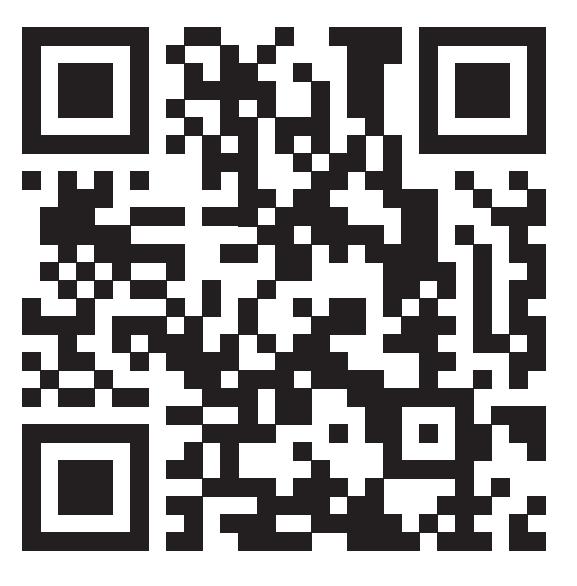



By Hayley Bisant @csucollegian
Editor’s Note: All opinion section content reflects the views of the individual author only and does not represent a stance taken by The Collegian or its editorial board. An hour and 15 minutes doesn’t seem like a large amount of time, until it’s a
Tuesday or Thursday. On those days, I always find myself looking up at the clock when only 30 minutes have passed and am surprised when I have over half a class period left. It’s not that I’m any less engaged or interested in my Tuesday and Thursday courses — in fact, they’re some of my favorite contentwise. It’s simply that their duration is hard to get used to when juxtaposed with the shorter 50-minute
blocks on Monday, Wednesday and Friday. This scheduling difference is inconvenient for a number of reasons, and it is especially frustrating because it could be easily solved by getting rid of classes on Friday. It is definitely a college student’s choice and responsibility to focus in class. Unlike grades K-12, individuals decide to pursue university and are more accountable for the learning they achieve accordingly. This being said, the inconsistent scheduling caused by the difference in class lengths does not set students up to succeed. The daily change in course duration breaks up routines, which are shown to improve focus and reduce stress when consistent.
Realistically, 25 extra minutes isn’t that long. However, it still accounts for half of a MWF class period. Instead of looking up at the clock when only 30 minutes of the class have passed, you would be over halfway done in a 50-minute class and ready to be done. A significant amount of content can be covered in this additional time, which can make longer classes feel more challenging. It’s like training for a 5K then having to run a marathon; there’s a difference in necessary stamina. I personally find it
harder to pay attention toward the end of a TR course — a phenomenon that does not occur for me during the rest of the week.
Having classes start 30 minutes into an hour and end 45 minutes after can also be confusing and irritating when it comes to scheduling. It’s easy to visualize how much time you have left to get ready when it’s 9 a.m. and your next class begins at 10 a.m. The progression of the hour lines up with what’s on the clock. From 8:30-9:30 a.m., it can be easy to over or underestimate how much time you have left from a quick glance, and this is especially true if you aren’t particularly oriented to which day of the week it is.
Perhaps this dichotomy between TR class schedules with the rest of the week isn’t that significant a problem for students on a day-to-day basis. At any given moment, it’s only a mild irritant to me, but sometimes not even that. However, classes are a commitment for an entire semester, and typical students will suffer through eight of them before they graduate. This inconsistency in scheduling can grow to be grating over time, especially when fixing it would be quite simple.
Tuesday and Thursday classes wouldn’t feel so long if an hour and 15 minutes were the standardized class period. By taking Fridays out of the equation and dividing those 50 minutes of course time between Monday and Wednesday, classes would be uniform for four days of the week. A three-day weekend would also allow for better recharge and make travel easier for those who want to make a trip home. This setup would also benefit instructors, whose schedules largely mirror students’. Other faculty at Colorado State University would have an extra day to work on campus without accounting for crowds that come with passing periods as well. Overall, getting rid of the hated Friday classes would be a win-win. An inconsistent class schedule throughout the week is far from the end of the world. A change to make it more uniform would be easy and greatly benefit all members of the CSU community, though. There’s no reason to avoid a simple adjustment when such subtle changes can make all the difference.
Reach Hayley Bisant at letters @collegian.com.
By Emma Souza @_emmasouza
Editor’s Note: This is a satire piece from The Collegian’s opinion section. Real names and the events surrounding them may be used in fictitious/semifictitious ways. Those who do not read the editor’s notes are subject to being offended.
“Do we not have, like, a skill requirement to coach our sports here? There should be a rule that if you’re too slow and too old to play the sport yourself, then lowkey, you shouldn’t be playing at all.”
TREY BOLTON CSU STUDENT
Picture this: The buzzer just sounded for Colorado State University’s March Madness game against the University of Maryland. Camera angles zoom in on CSU players snot-nosed, teary-eyed, violently group-hugging in an
intensely boy manner — mostly dapups lost within a symphony of “bro’s” and other love confessions. But the second that the video stops rolling, Niko Medved turns to the crowd and says, “It isn’t over yet, bitches.”
Of course, after he and star player Jaylen Crocker-Johnson announced their move to the University of Minnesota, CSU basketball fans were left devastated, angry and petitioning for the player’s replacement to have at least an 8.5/10 face card. In lieu of changing his transfer plans, Medved announced he’d be leaving with one final Moby Madness goodbye.
“We’re holding a student vs. staff basketball tournament to celebrate my seven seasons here,” Medved said in a press release several weeks ago.
“It’ll be a raffle system. Enter your name and CSU student ID online at www.meddie_dunkinonem.gargleit. org. Seven lucky students will be selected to get absolutely shat on by me and the Moby janitors.”
The winning team could pick from an assortment of prizes, including but not limited to a $50 Chipotle gift card, $50 in RamCash, a signed article of clothing from any player on the team, a $20 Delta voucher for plane tickets only redeemable for Minneapolis-Saint Paul paired with two free UMN basketball tickets, a life-size cutout of Medved and his two kids or a chance to play Moby Arena’s hit game, Crawl for Cash, but with condoms, patented “Crawl for Childlessness.”
Medved, several janitors and a slew of professors were seen kicking
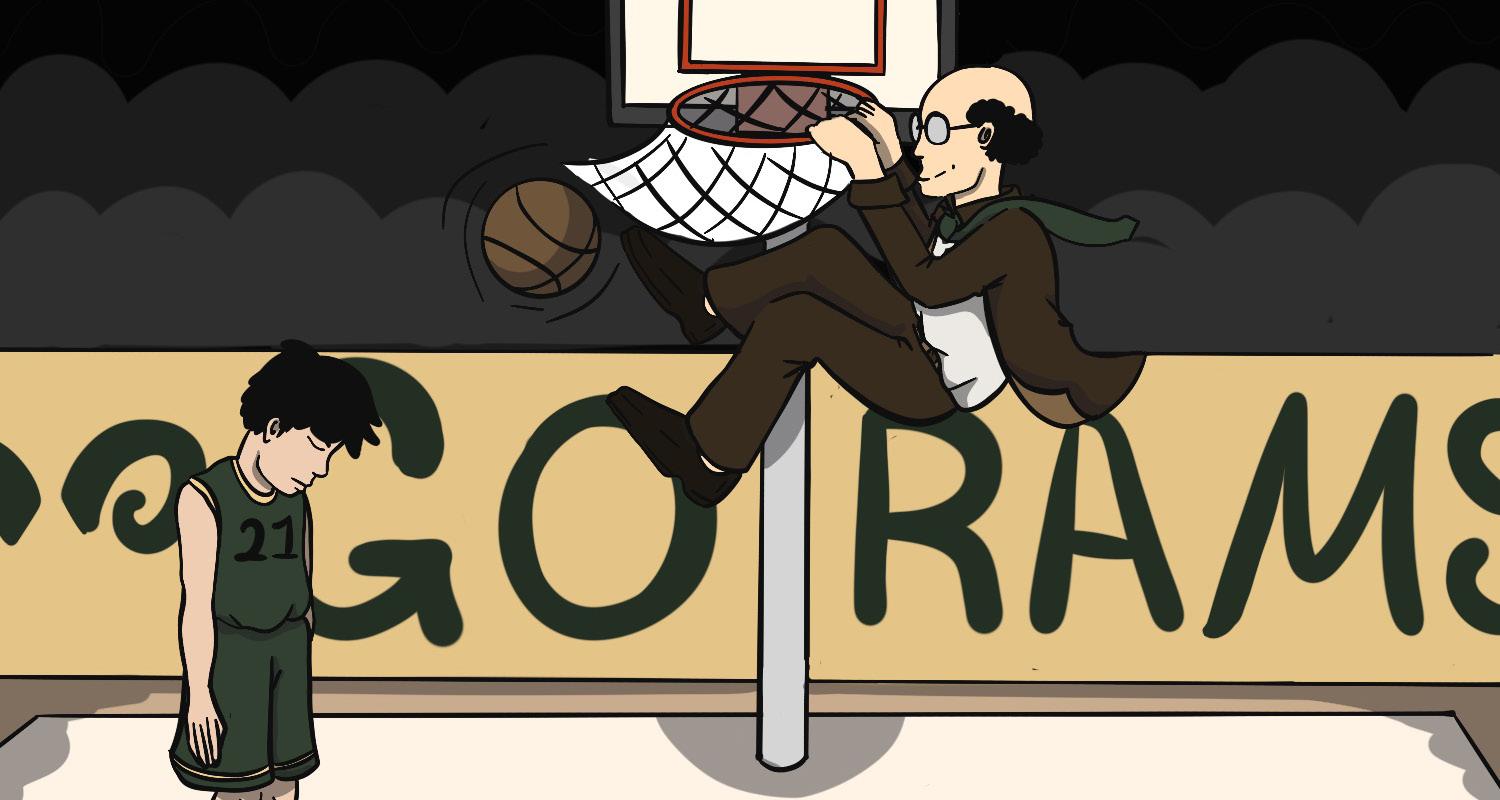
students off the basketball courts on the Intramural Fields last week. Though they claimed to be practicing for the upcoming tournament, students only reported witnessing an incredibly prolonged game of H.O.R.S.E.
“I kept waiting and waiting for someone to give me the ball back,” CSU student Skippy Dribbles said. “But nobody could make a single shot to save their lives. The game went on forever, trying to do all these tricks and shit. Like, just do a free throw, but they couldn’t even do that. They were so bad.”
“Do we not have, like, a skill requirement to coach our sports here?” asked Trey Bolton, fellow CSU student. “There should be a rule that if you’re too slow and too old to play the sport yourself, then, low-key, you shouldn’t be playing at all.”
Medved said the staff team was intentionally trying to lower expectations.
“Sneak attack,” he said in response, shrugging. “How do you think CSU became Mountain West champions?
That’s the No. 1 play in our playbook. All I have to do when they’re on the court is make a trilling noise, like a
bird,” he paused to trill. “And then they go all stealth mode. That’s what we staff are going to do on Monday. You’ll see.”
The staff lost the tournament with a 1-5 record. Their lone win was against a fifth-grade girls basketball team that accidentally got entered into the raffle.
“What can I say?” Medved said when asked about the accident. “We dunked on ‘em.”
Reach Emma Souza at letters @collegian.com.




By Sophia Masia
TODAY’S BIRTHDAY (04/24/25)
ARIES (MARCH 21 - APRIL 19)
Assess what makes you feel secure this week. Sure, things you own, where you live and what’s in your bank account are nice, but what about the security in knowing who you are? What about security in having genuine connections, a spiritual practice or something else entirely? Anchor yourself in the nonphysical, Aries.
TAURUS (APRIL 20 - MAY 20)
Happy Solar Return, Taurus! What will you be wishing for when you blow out the candles this year? You’re entering a period of assessing your relationship with your self-worth, so think carefully about what you’re bringing in. Commit to acceptance of your most beguiling quirks this week, Taurus.
GEMINI (MAY 21 - JUNE 20)
This is your sign to log off. Make peace with the pause this week; not everything needs to be said or solved right now, and self-critique will get you nowhere. Tend to yourself and your well-being with the same care you give others. You deserve your attention, too, Gemini.
CANCER (JUNE 21 - JULY 22)
The people around you should
be your biggest cheerleaders. If swiping on the apps or downing vodka crans at Ram Band no longer does it for you, that’s OK. Apathy often precedes growth. Experiment with new personas this week and trust that being yourself will only attract who’s meant for you, Cancer.
LEO (JULY 23 - AUG. 22)
Your career and public-facing life are in the spotlight, but this week, I’d like you to think about who you are when nobody’s watching. Consider how your values guide your professional decisions. The clearer you are about your motivations, the easier it will be to advance. Don’t let fear guide you, Leo.
VIRGO (AUG. 23 - SEPT. 22)
You’re seeing the world through a new lens and letting the realizations change your trajectory. Whatever is done is done; use it as a starting point to tap into streams of creativity you never dreamed possible. Be bold, be radical and allow yourself to be different, Virgo.
LIBRA (SEPT. 23 - OCT. 22)
It’s time to soften your approach to power, boundaries and sharing. Authority and trust issues may arise, so anchor your nervous system in what you have agency over. Let yourself feel without fixing it right away. Dust yourself off and relax — you’ll come out feeling like yourself again, Libra.
This week, get clear about your relationship goals and what’s keeping you from manifesting them. People want to love you if you’re ready to accept it. You’re not always fighting demons; sometimes you’re just fighting genuine connection. It’s always the enemy in the shadows but never the enemy in the mirror, is it Scorpio?
SAGITTARIUS (NOV. 22 - DEC. 21)
This week, find the middle ground in areas you’ve been overindulging. Writing a to-do list is not the same as getting it done, and no, you can’t “catch up” on sleep. Intentional routines make freedom sustainable. You can be committed without being captive, Sagittarius.
CAPRICORN (DEC. 22 - JAN. 19)
Pleasure, romance and creativity take centerstage this week — so long as you let them. Say “yes” to what feels good without guilt. Linger in joy and relax your grip on perfection, even if it’s unproductive. Not everything has to be earned. Breathe, soften and enjoy, Capricorn.
AQUARIUS (JAN. 20 - FEB. 18)
It’s time to take it back to your roots: your literal home, your Fort Collins home, your body and your family, whether chosen or biological. If you’re in the mood to nest this week, rearrange the furniture, bake your neighbor cookies or revisit childhood nostalgia, stay in, Aquarius.
PISCES (FEB. 19 - MARCH 20)
You’re not a sign of many words; you prefer nonverbal messaging like body language, telepathy and strategic Instagram story lyrics, but this week you’re being handed the microphone. Others can’t know what you’re thinking until you tell them. Give your feelings a















































